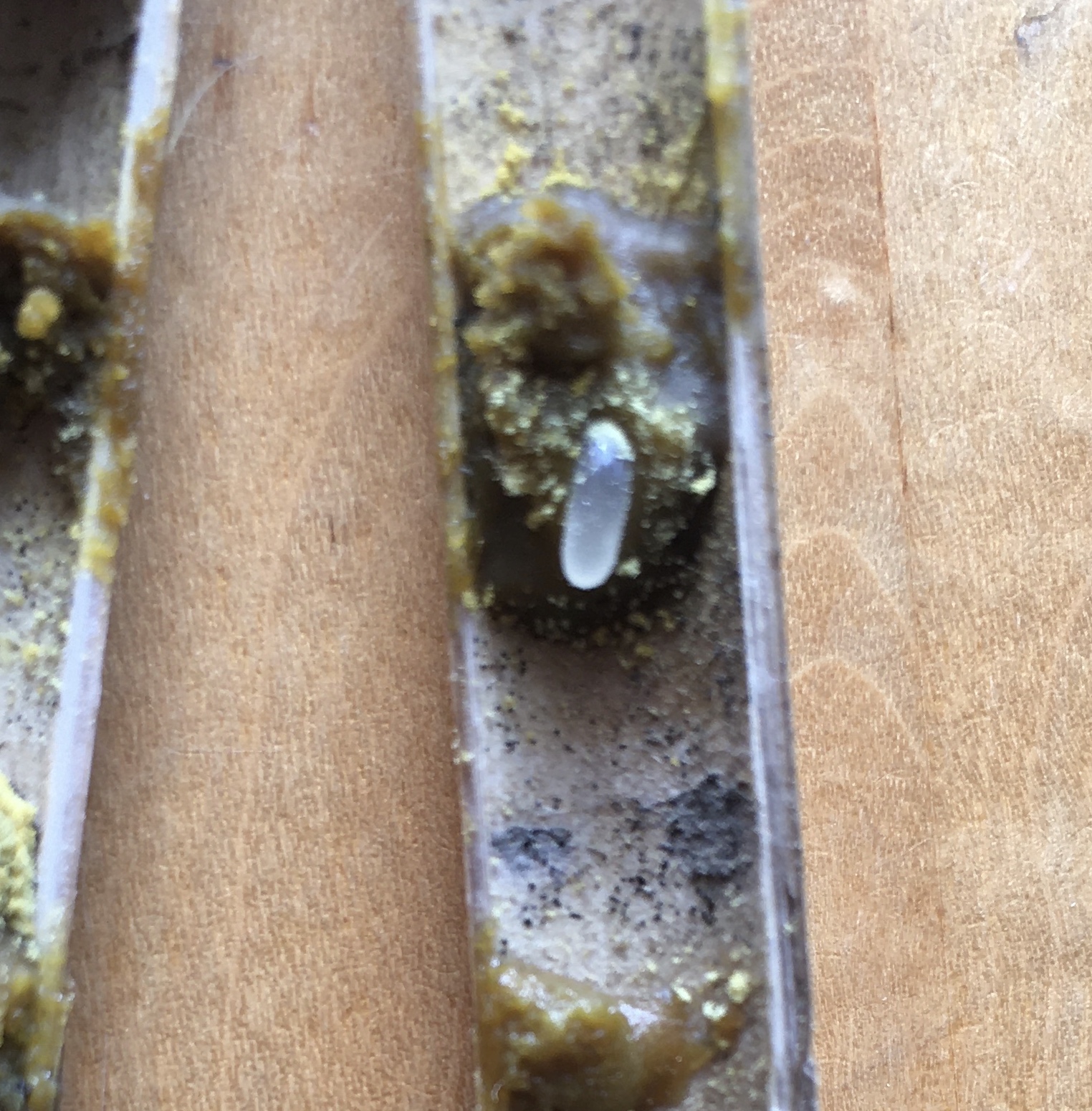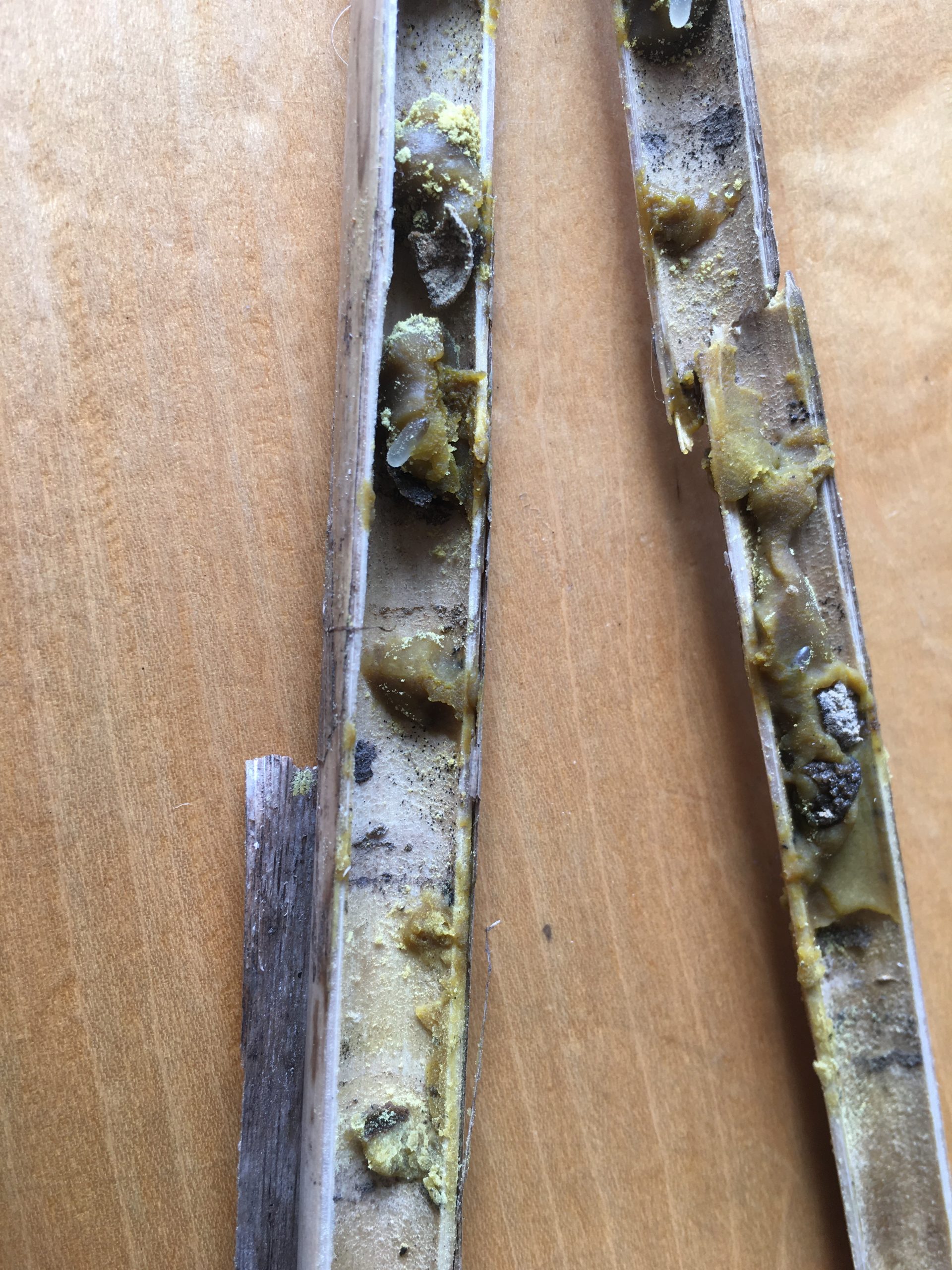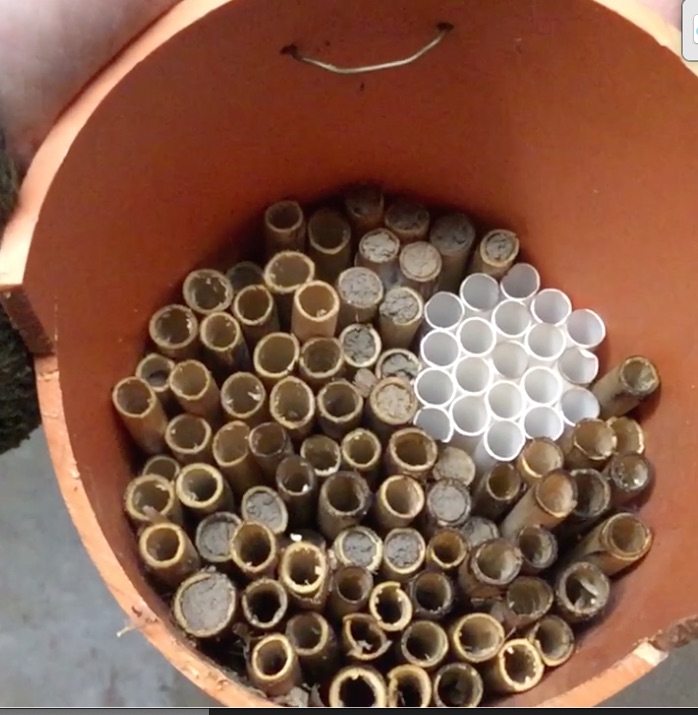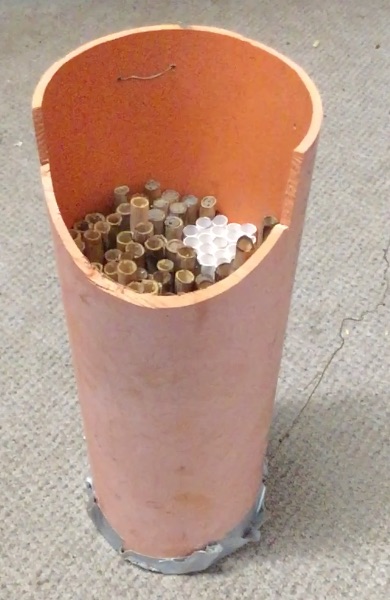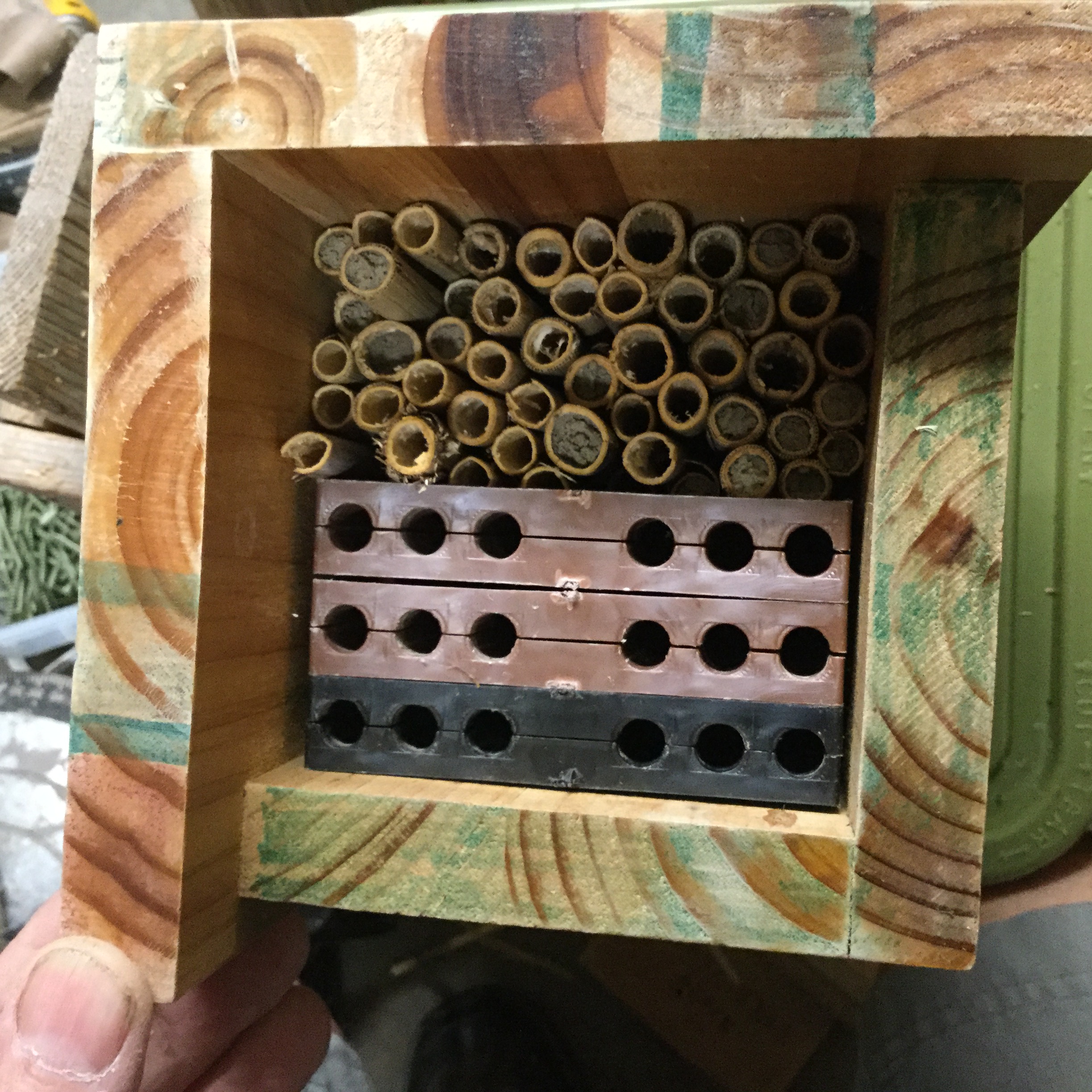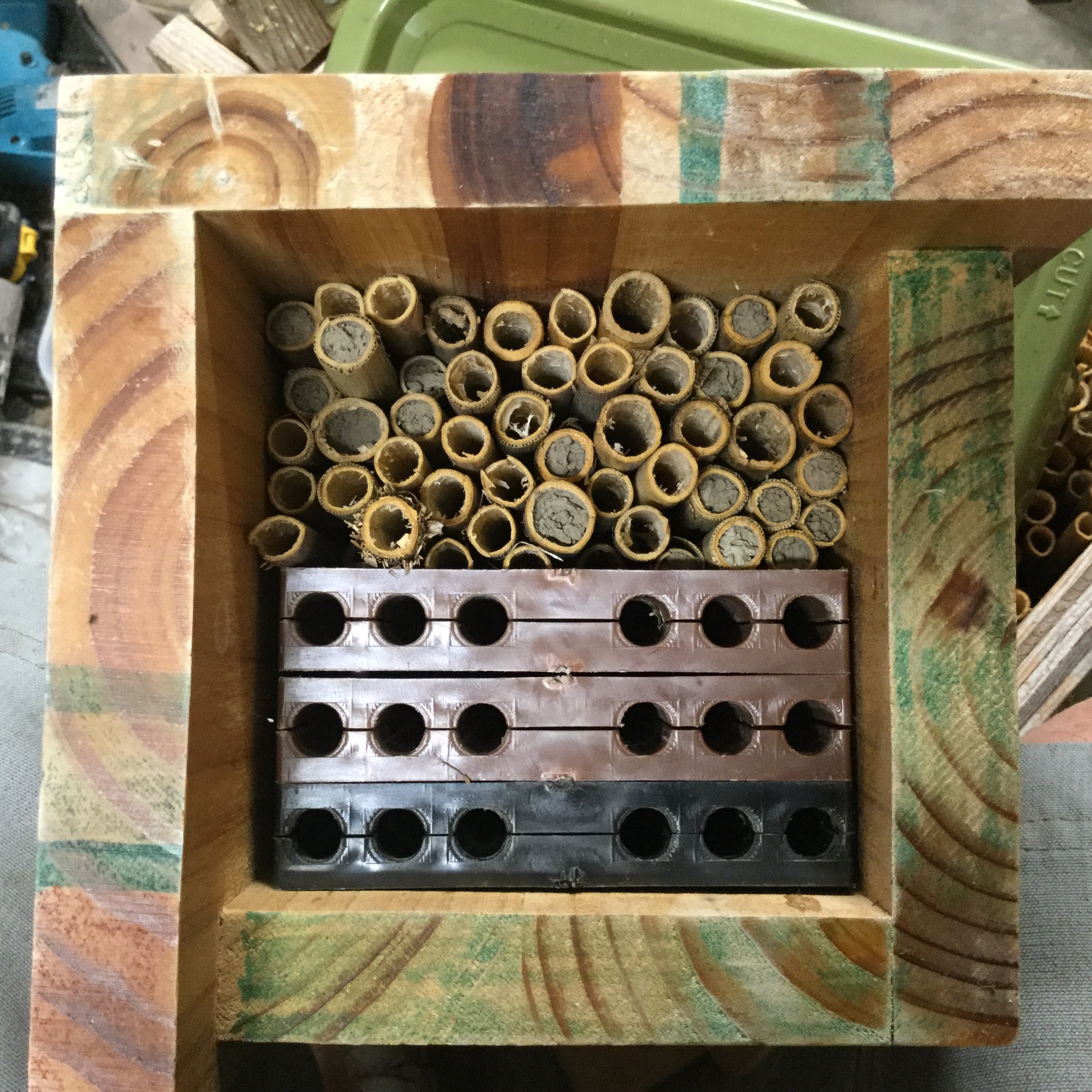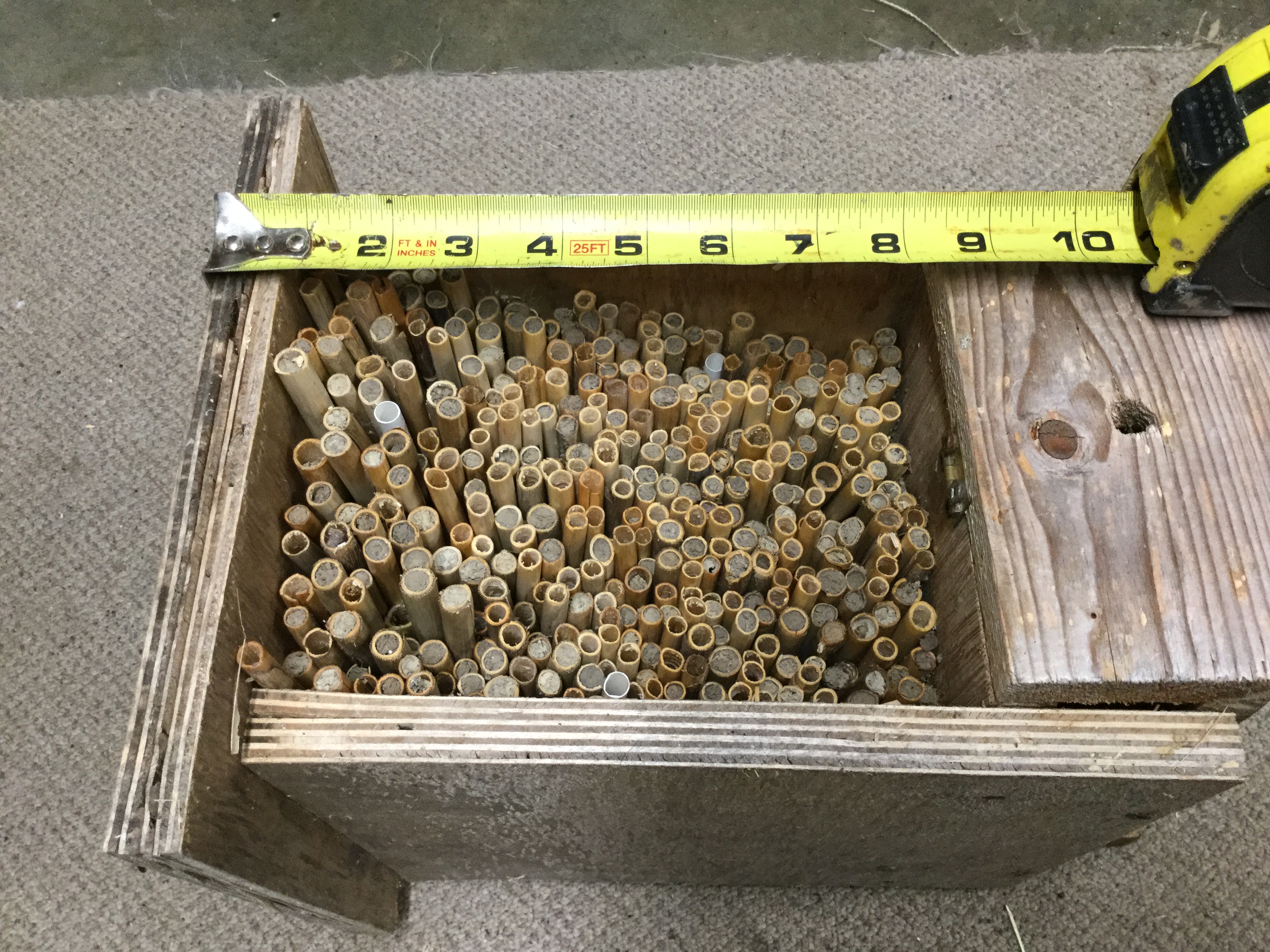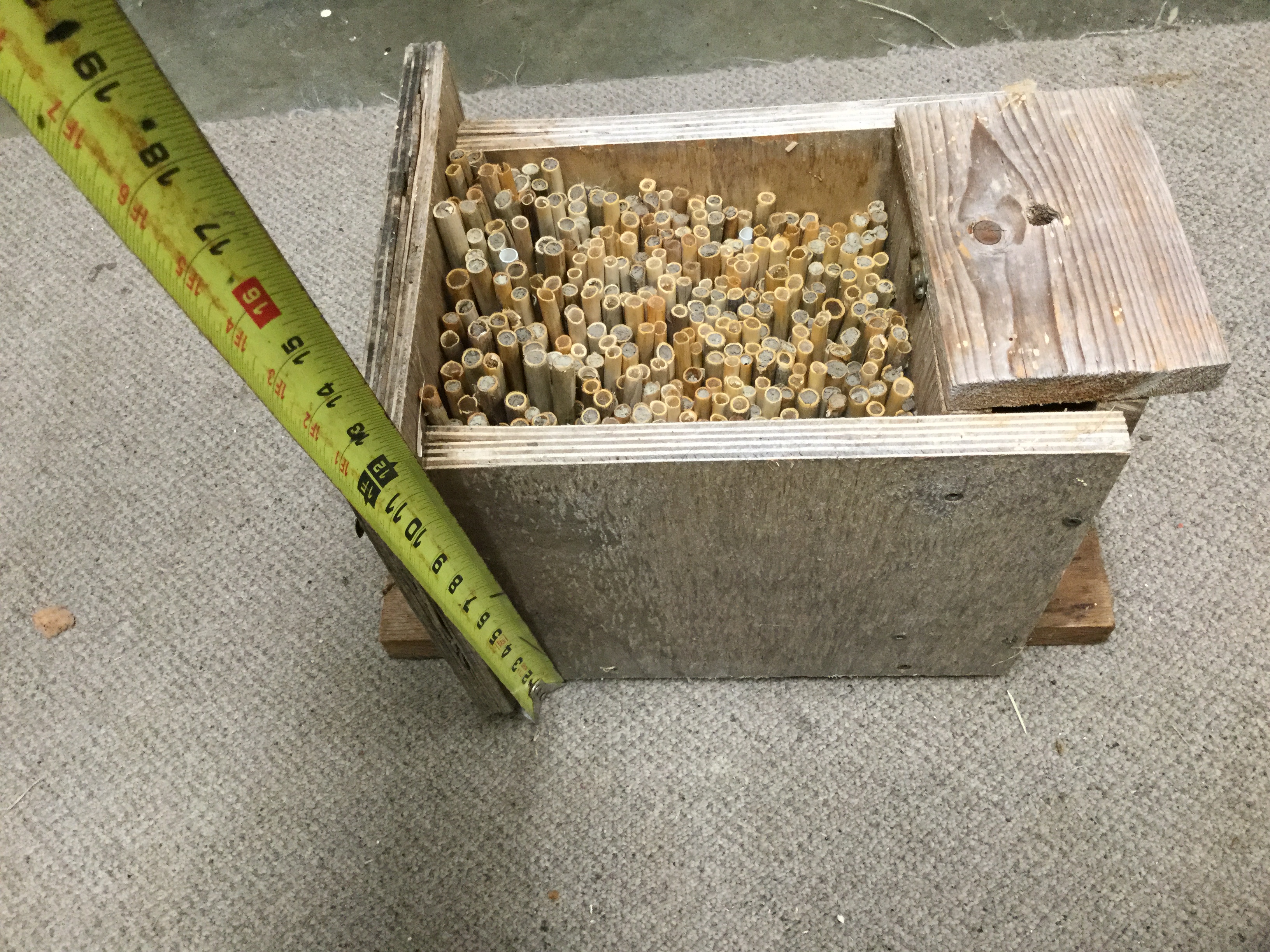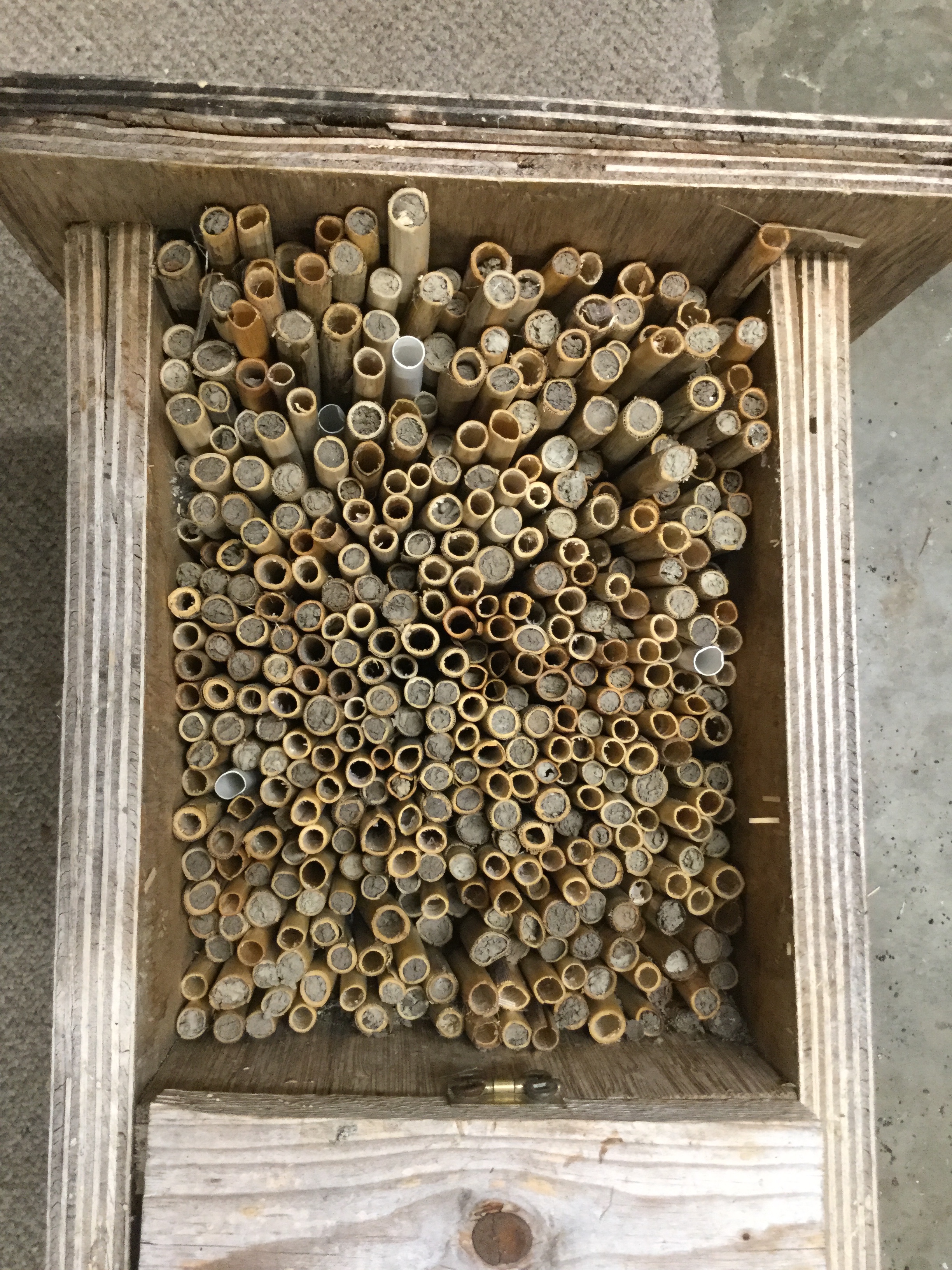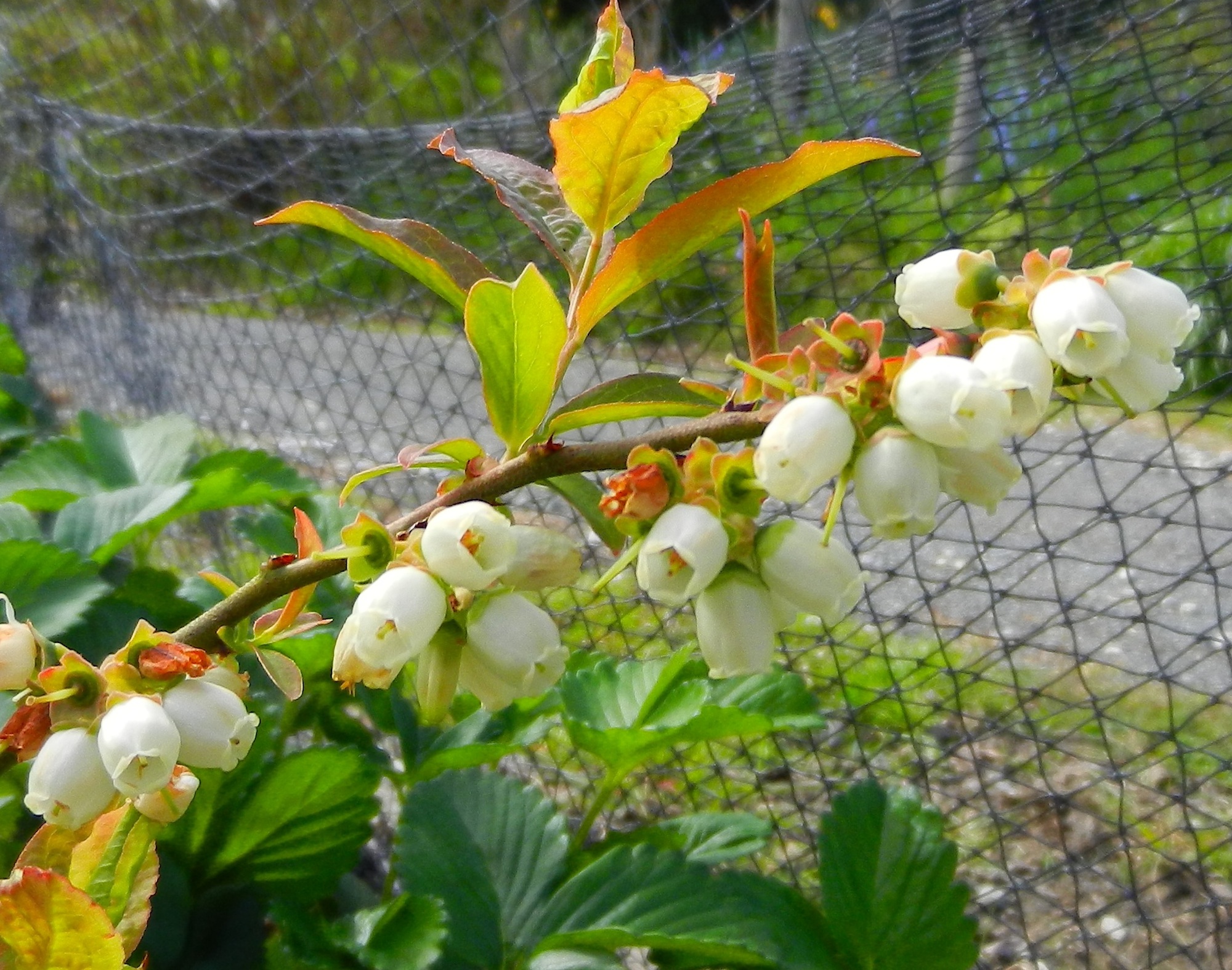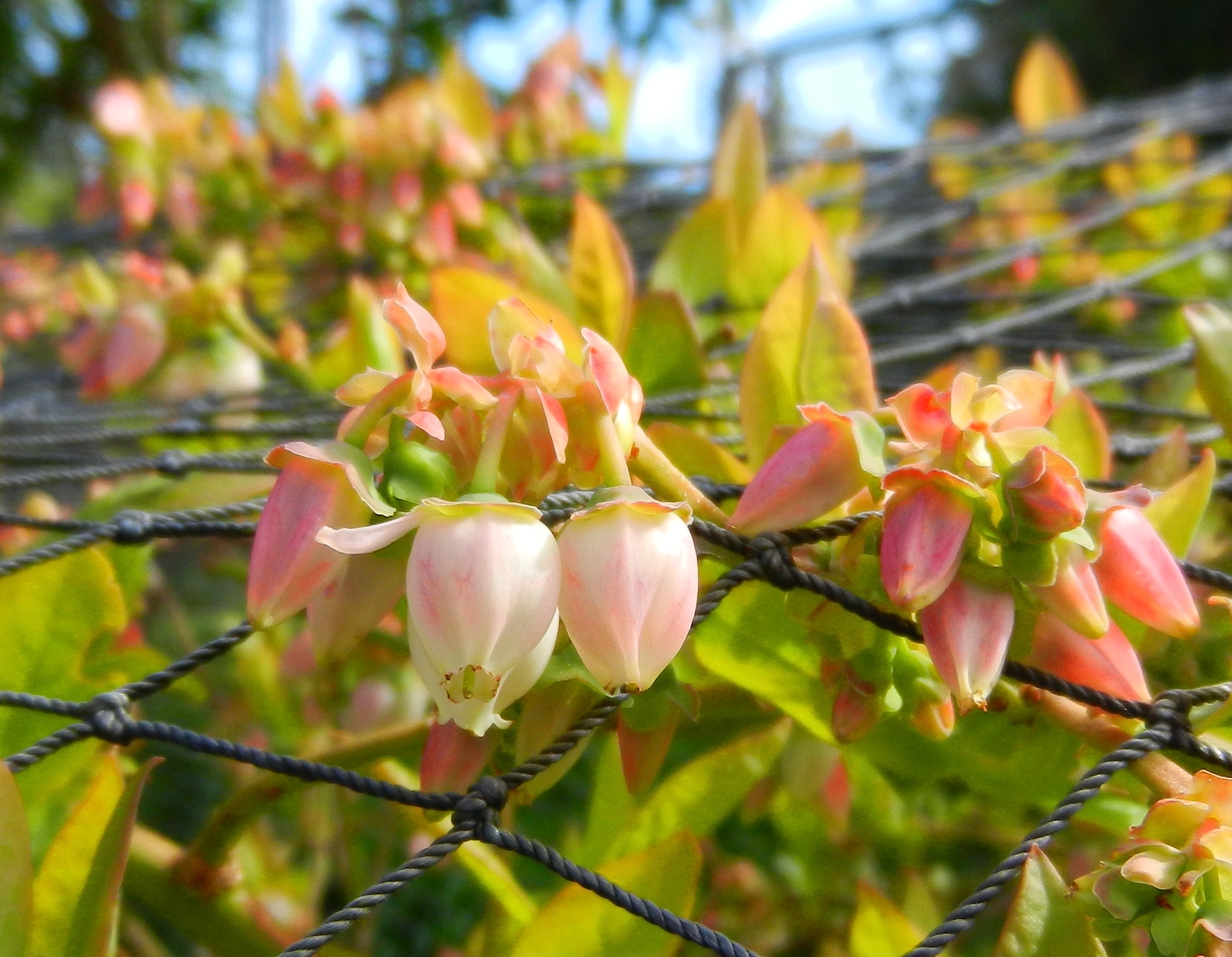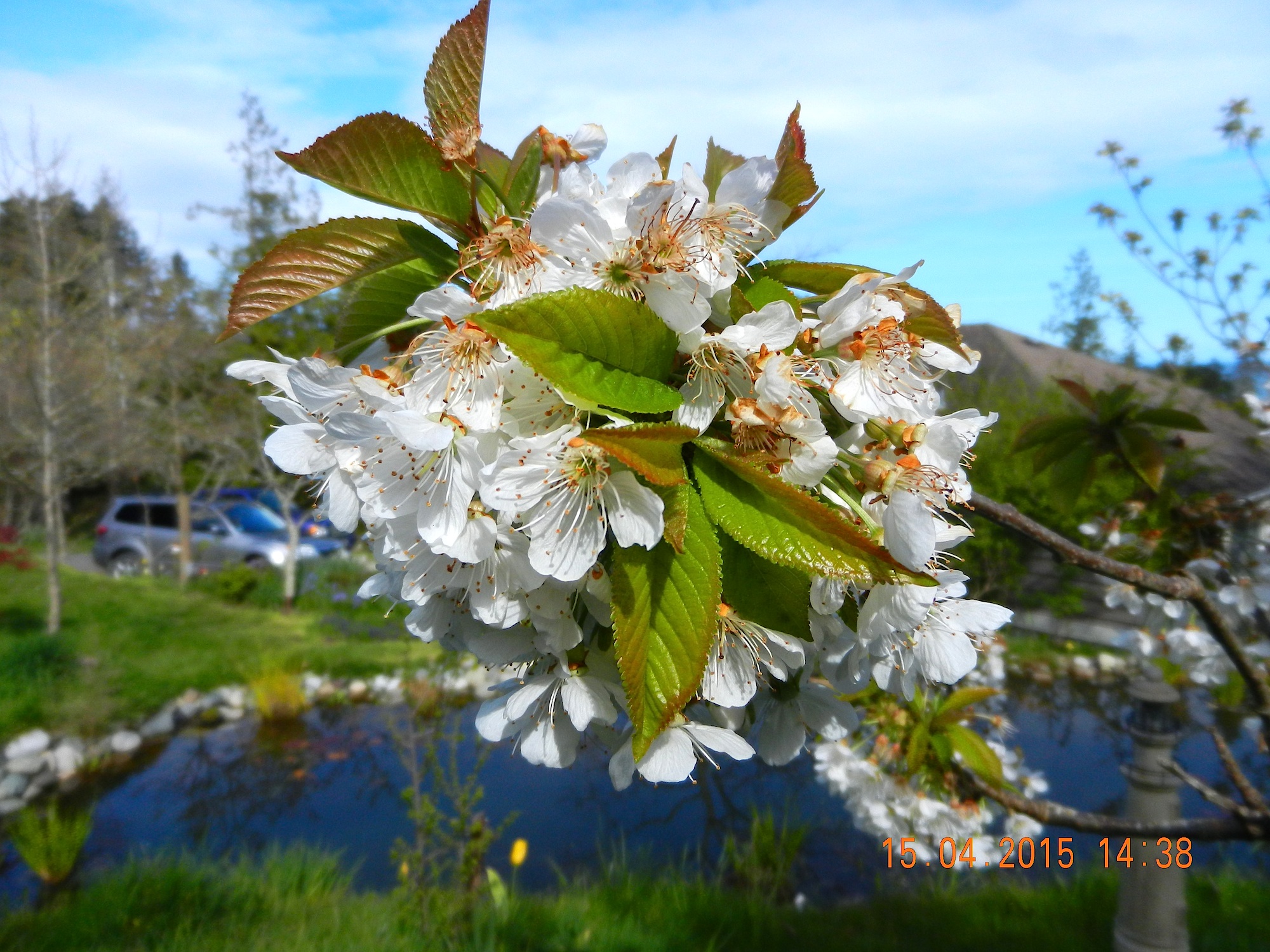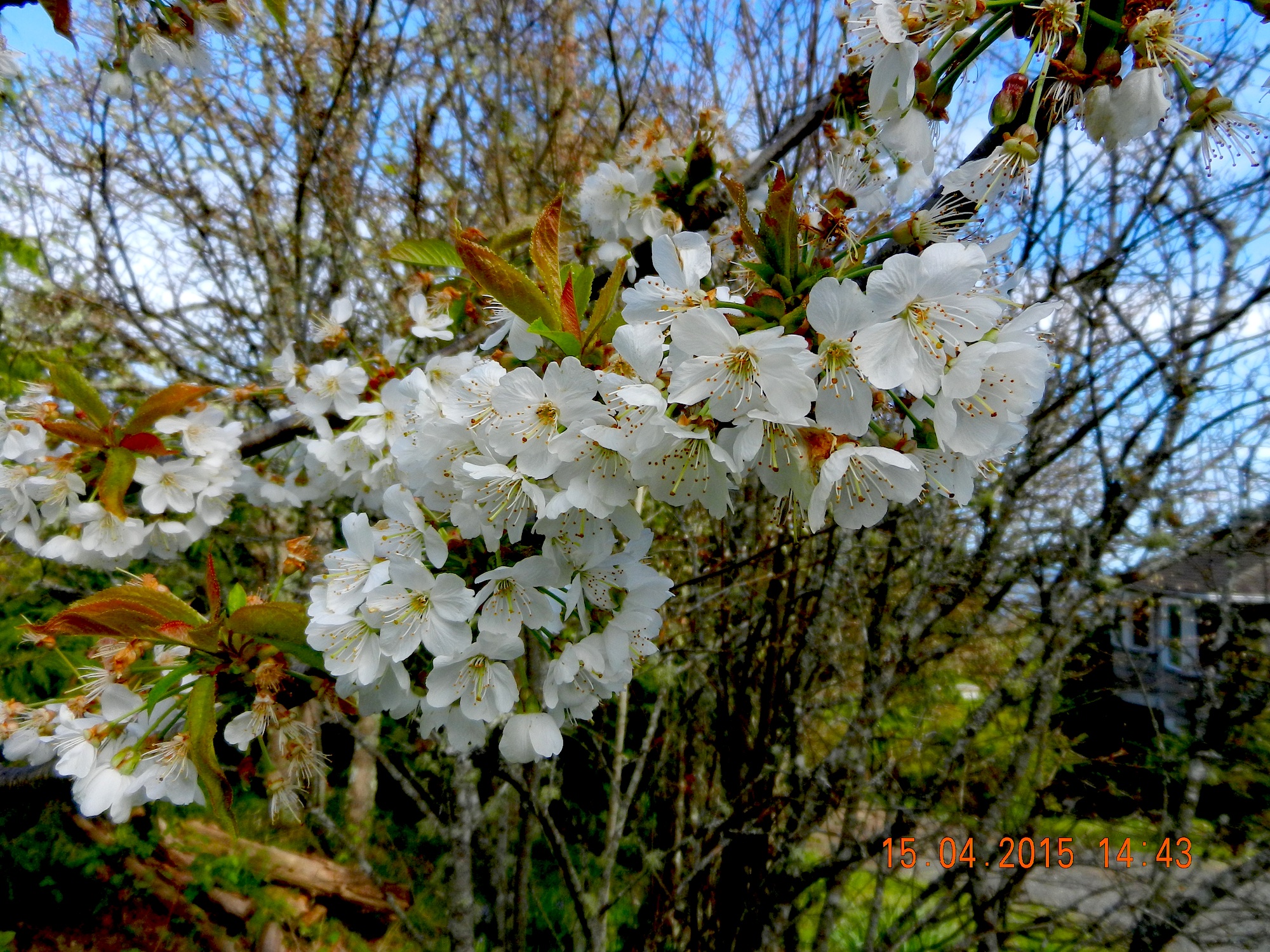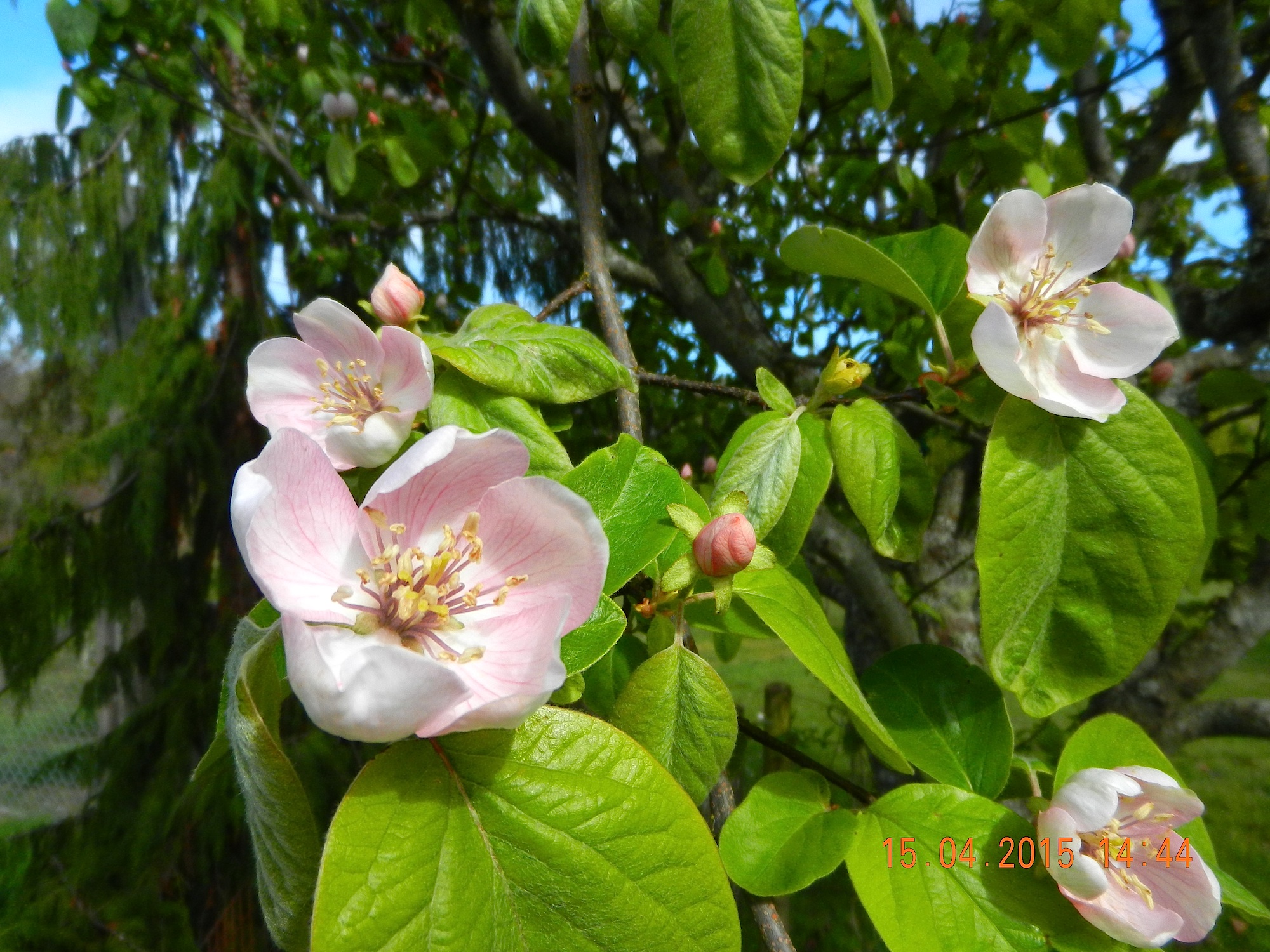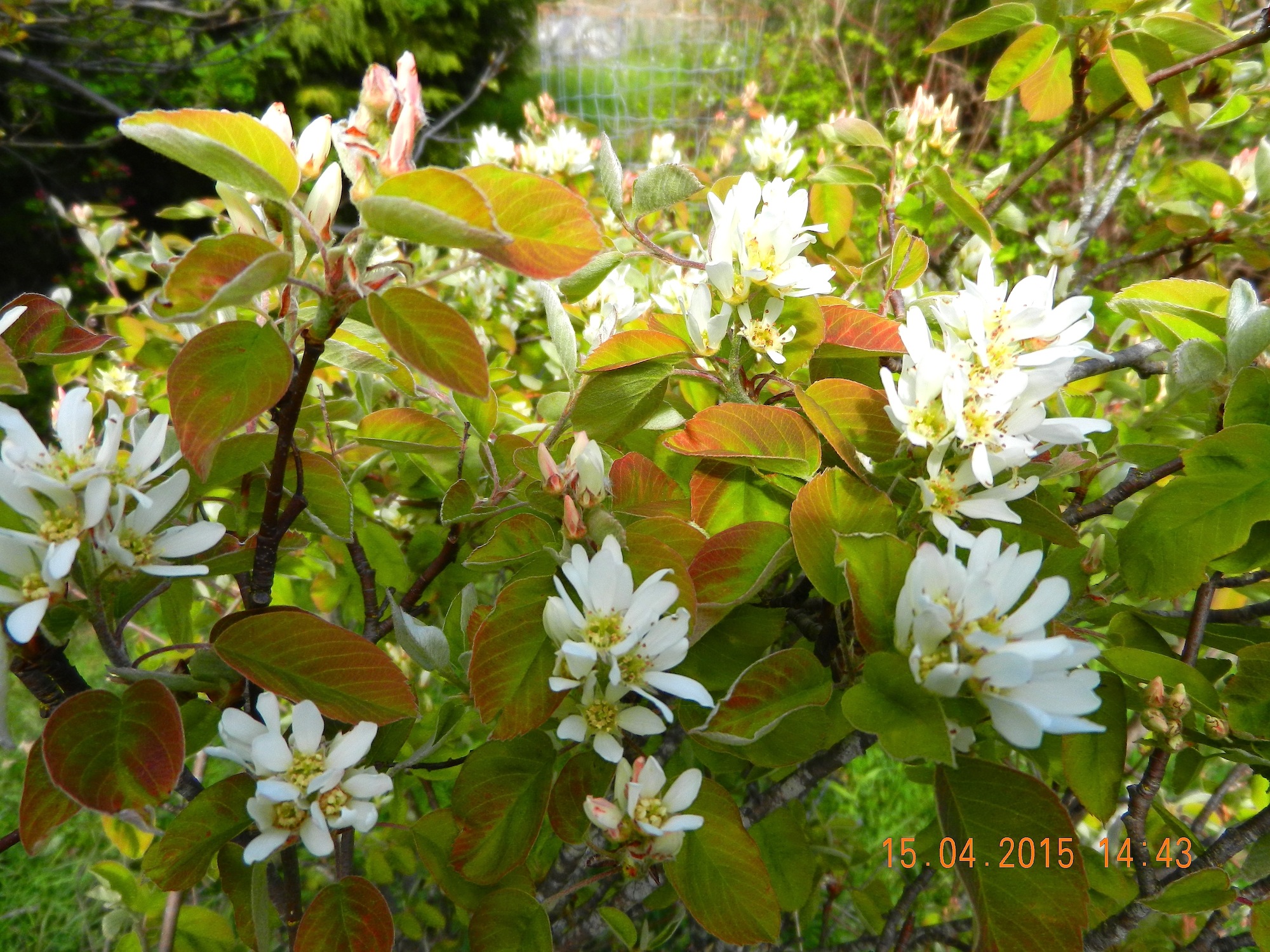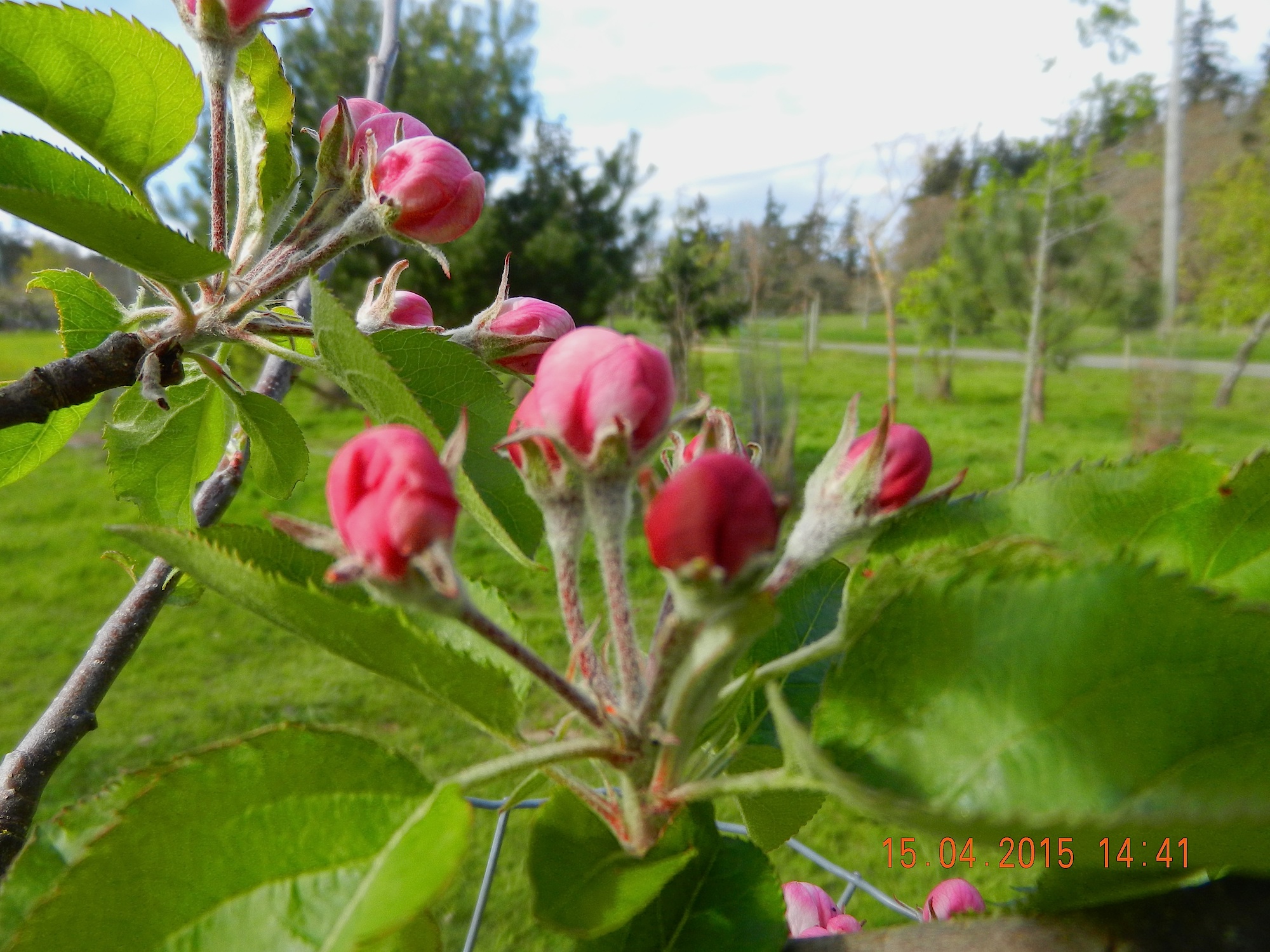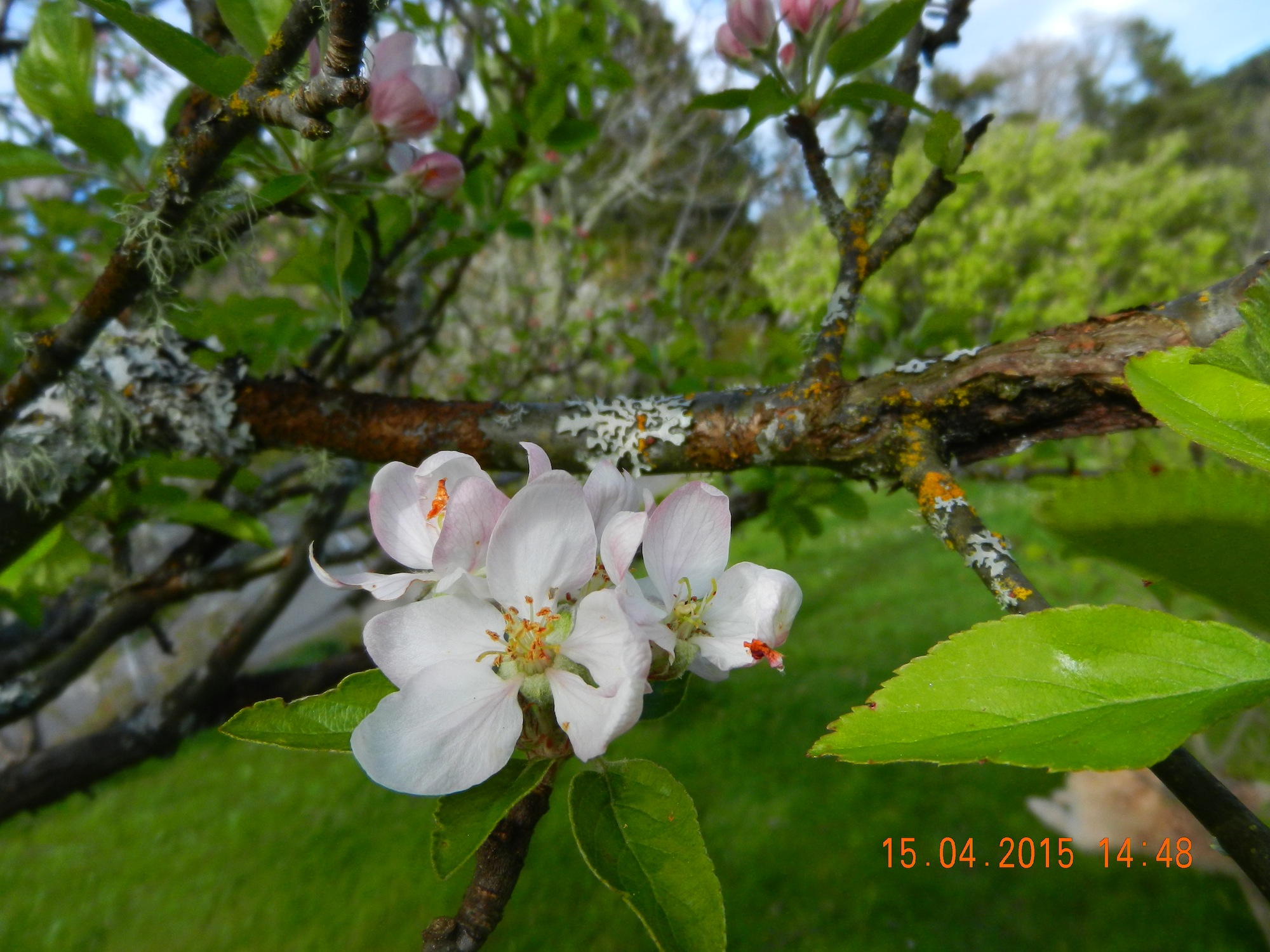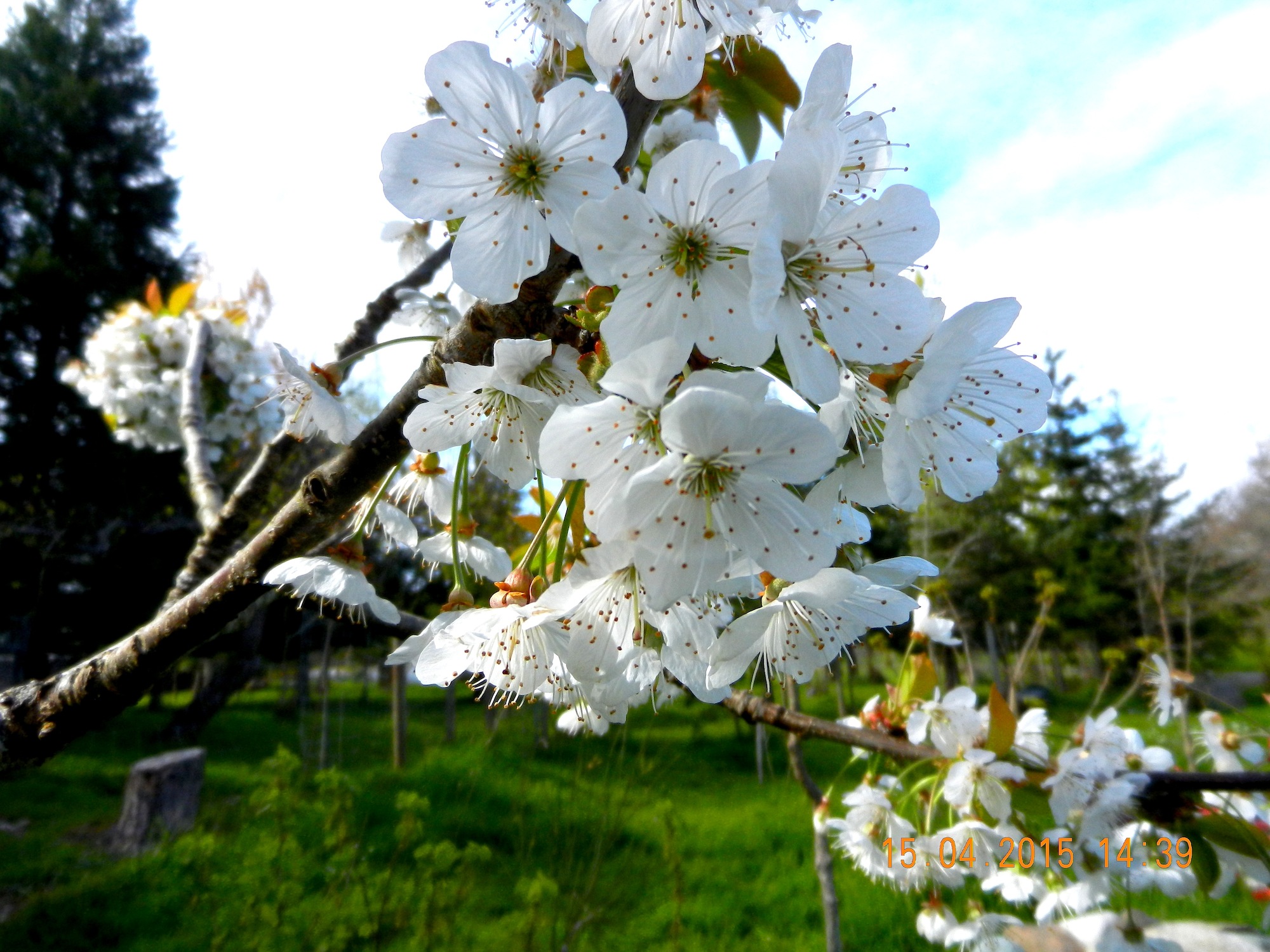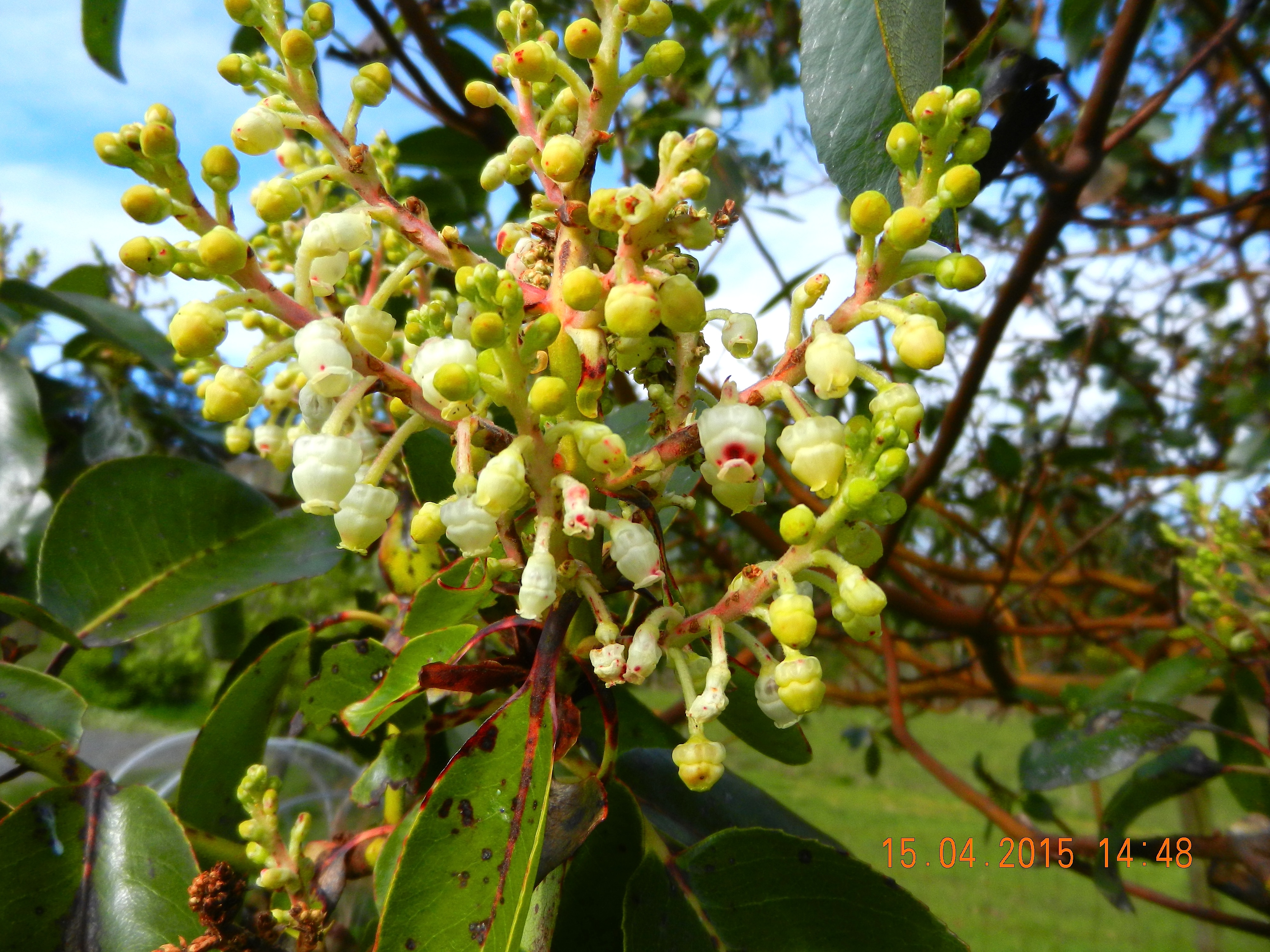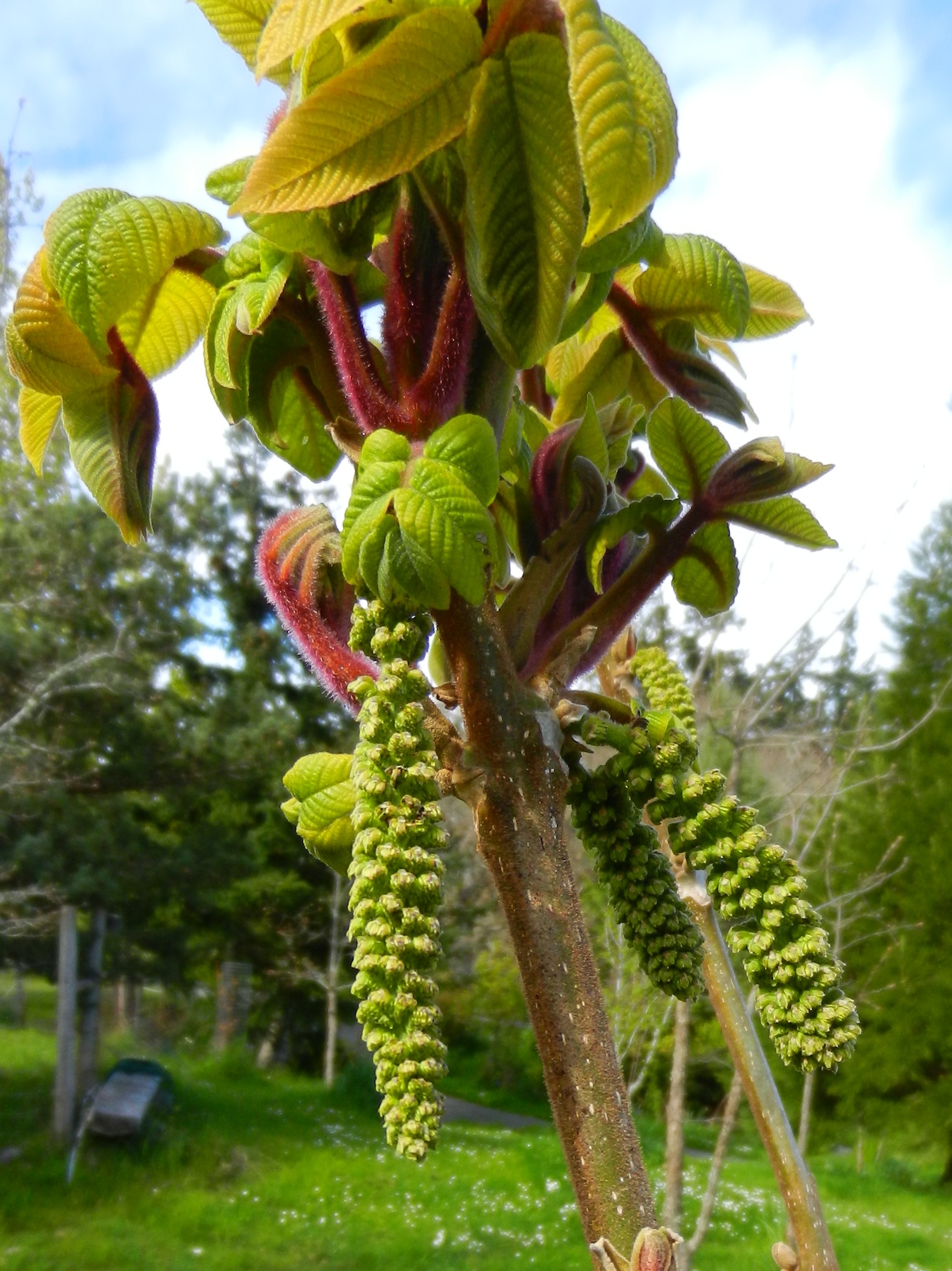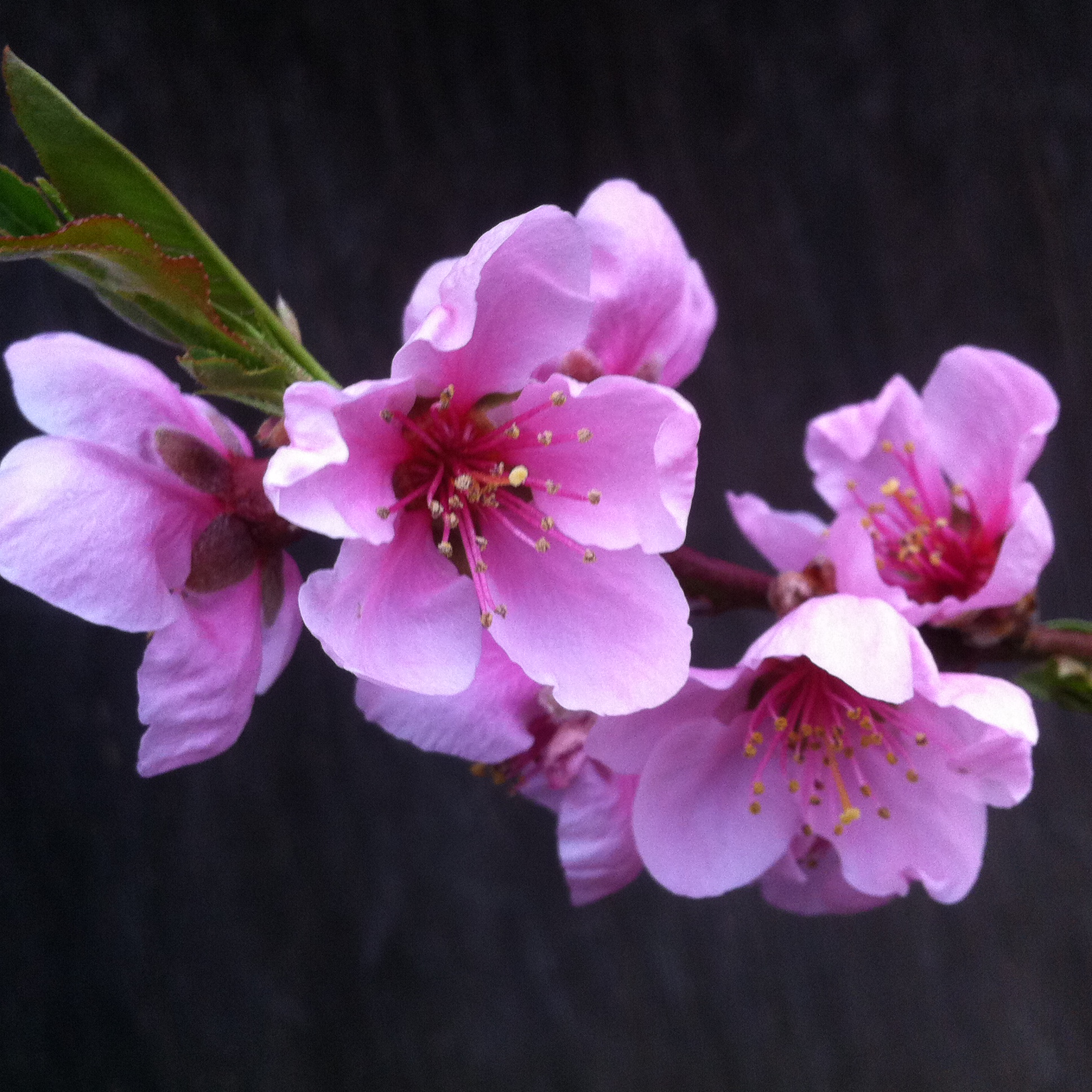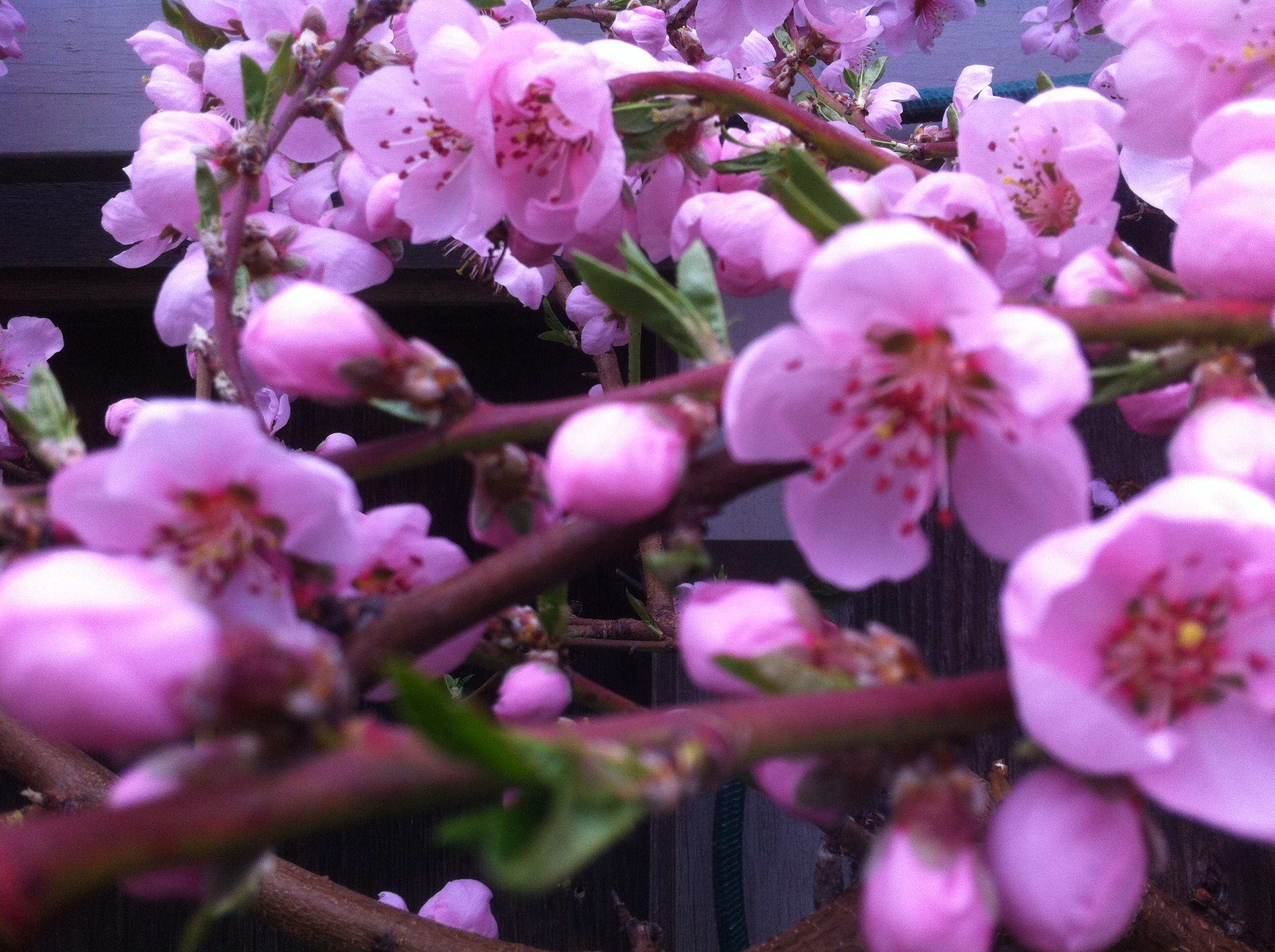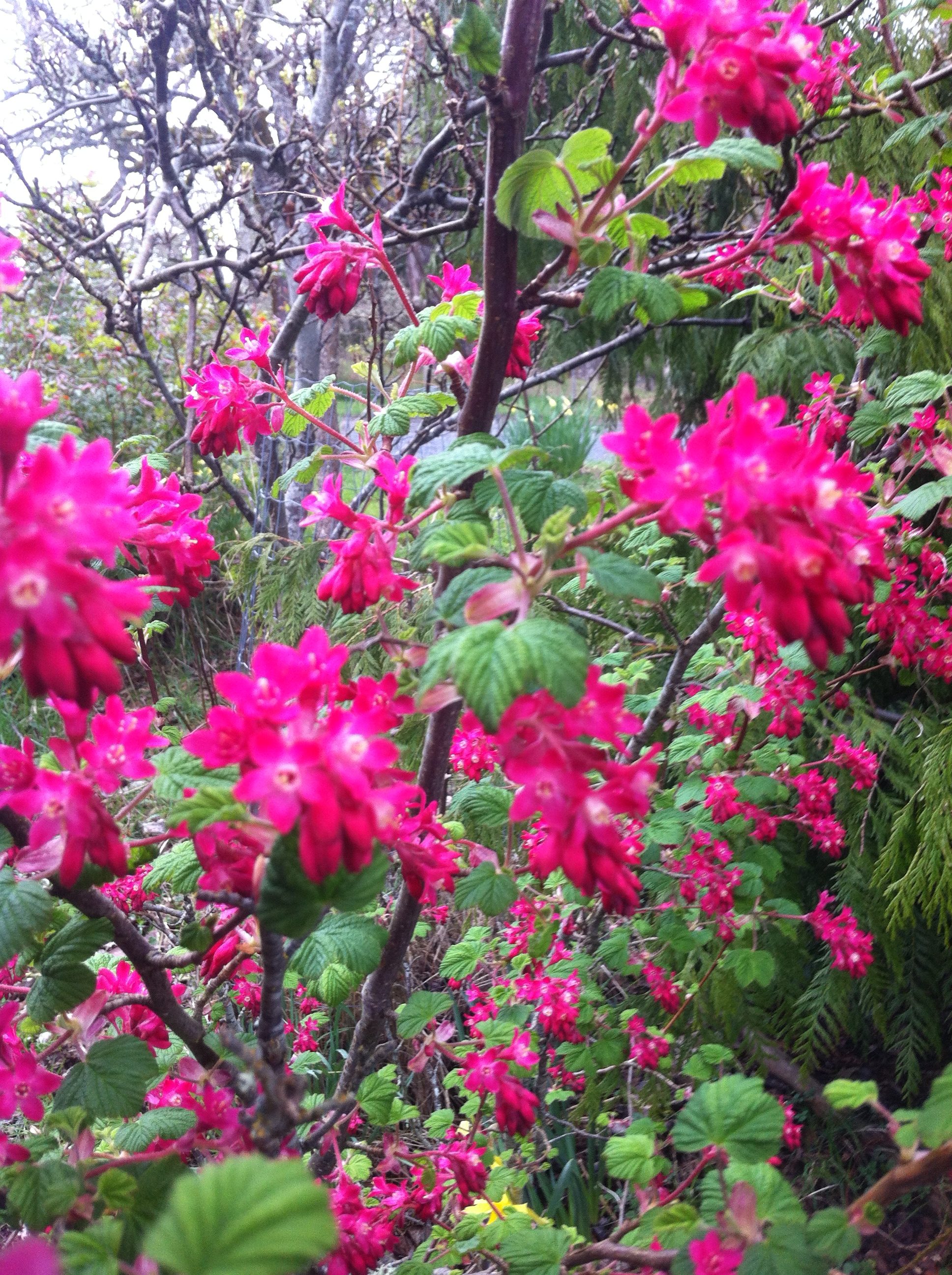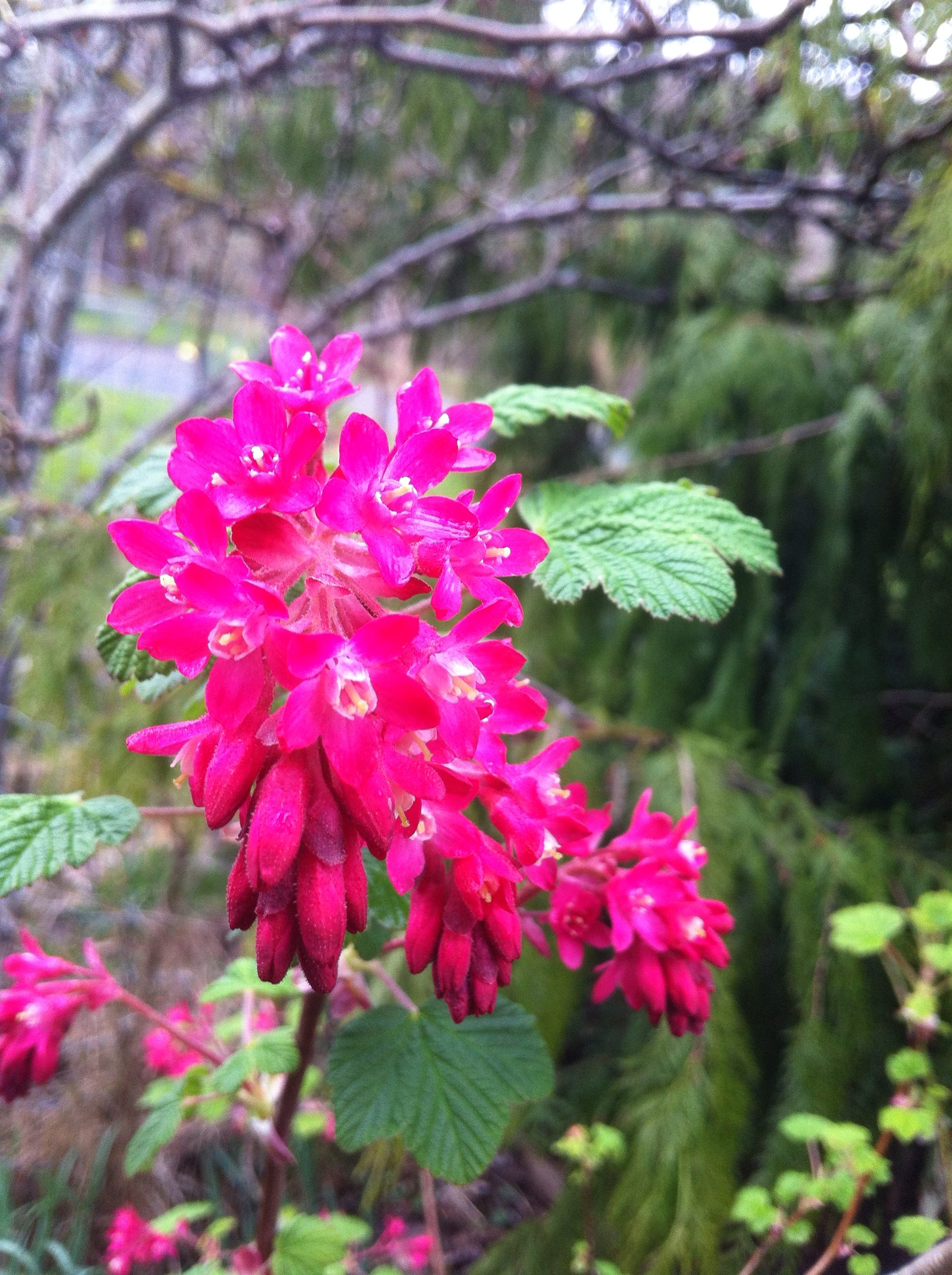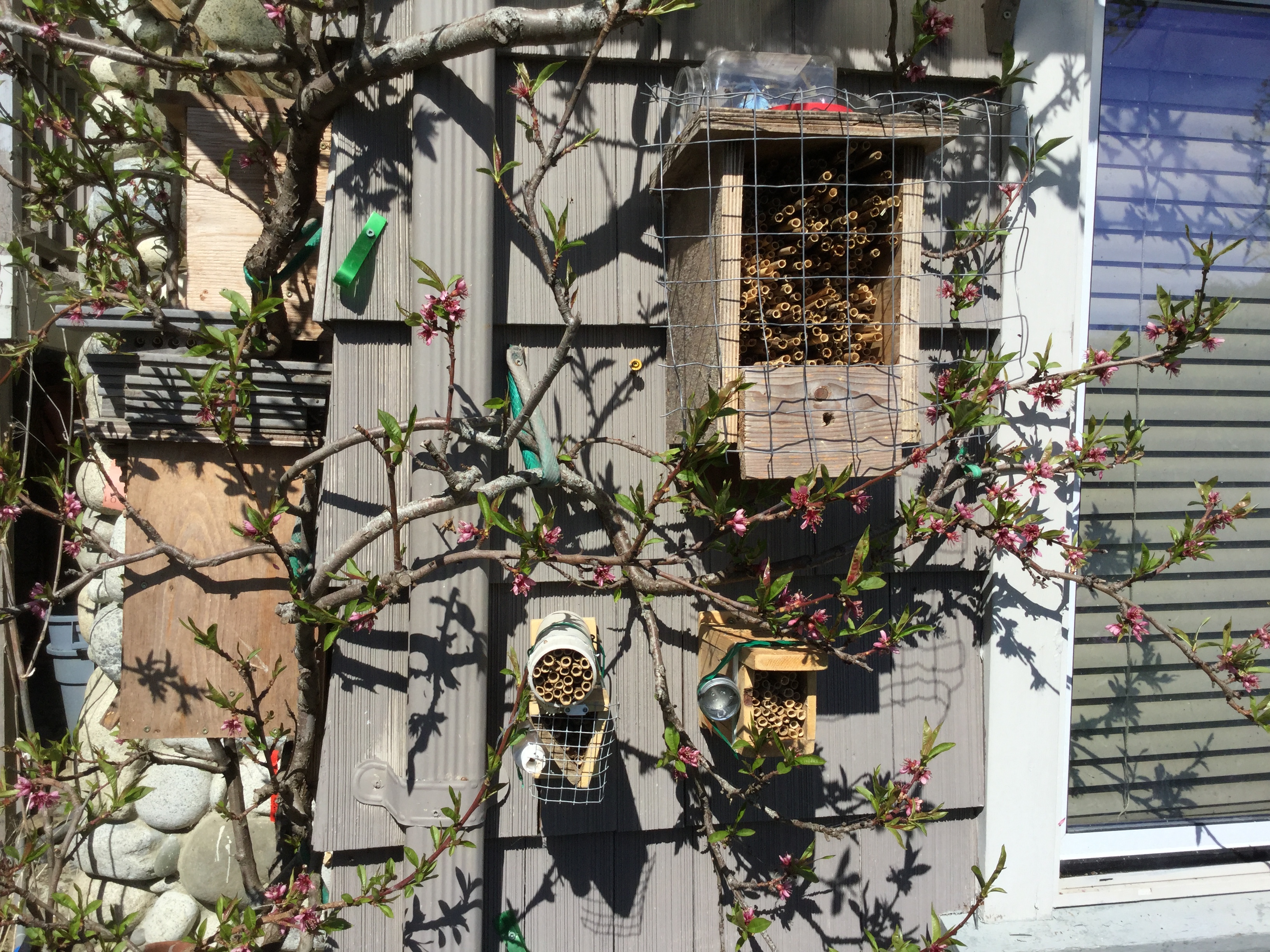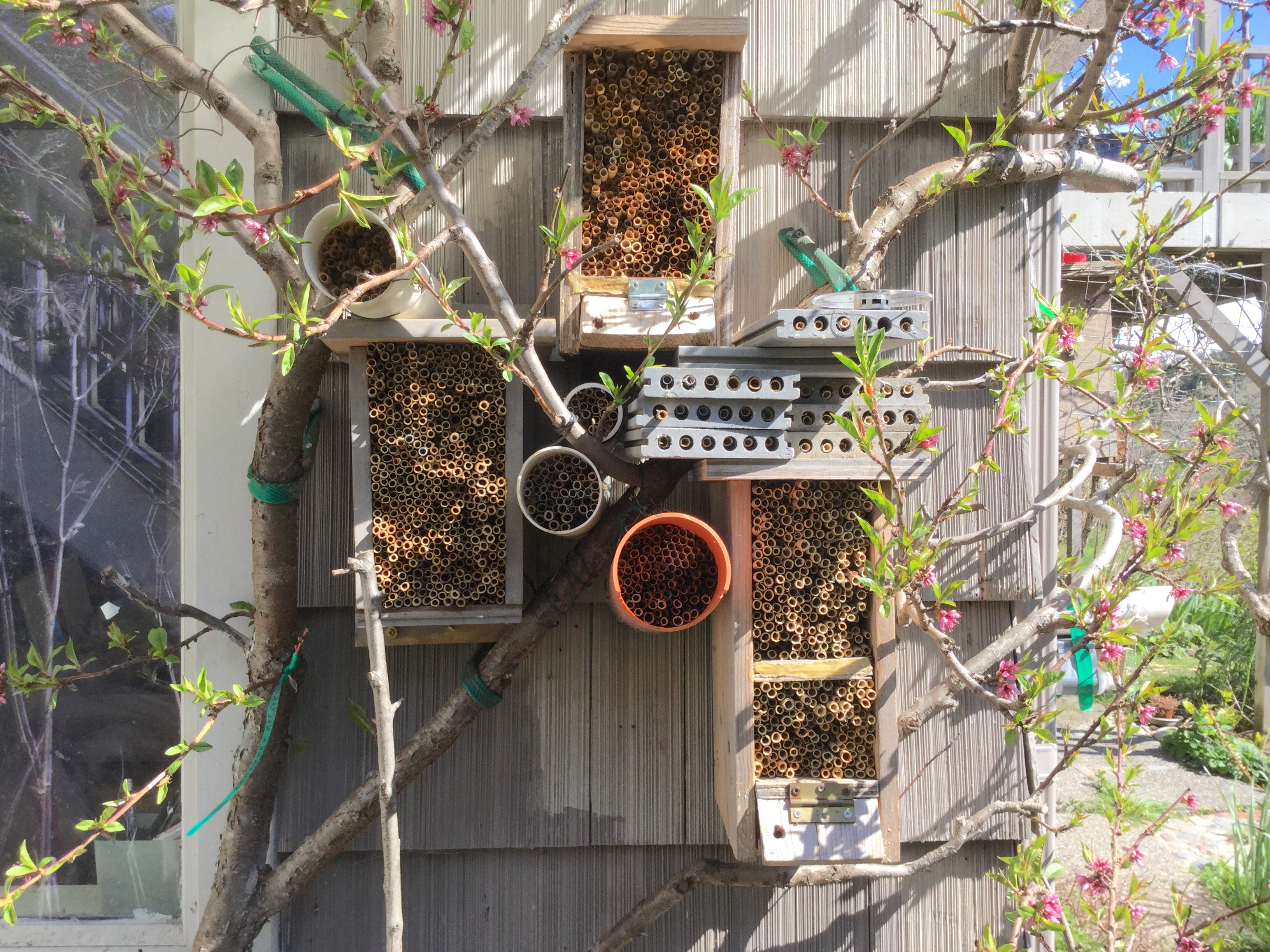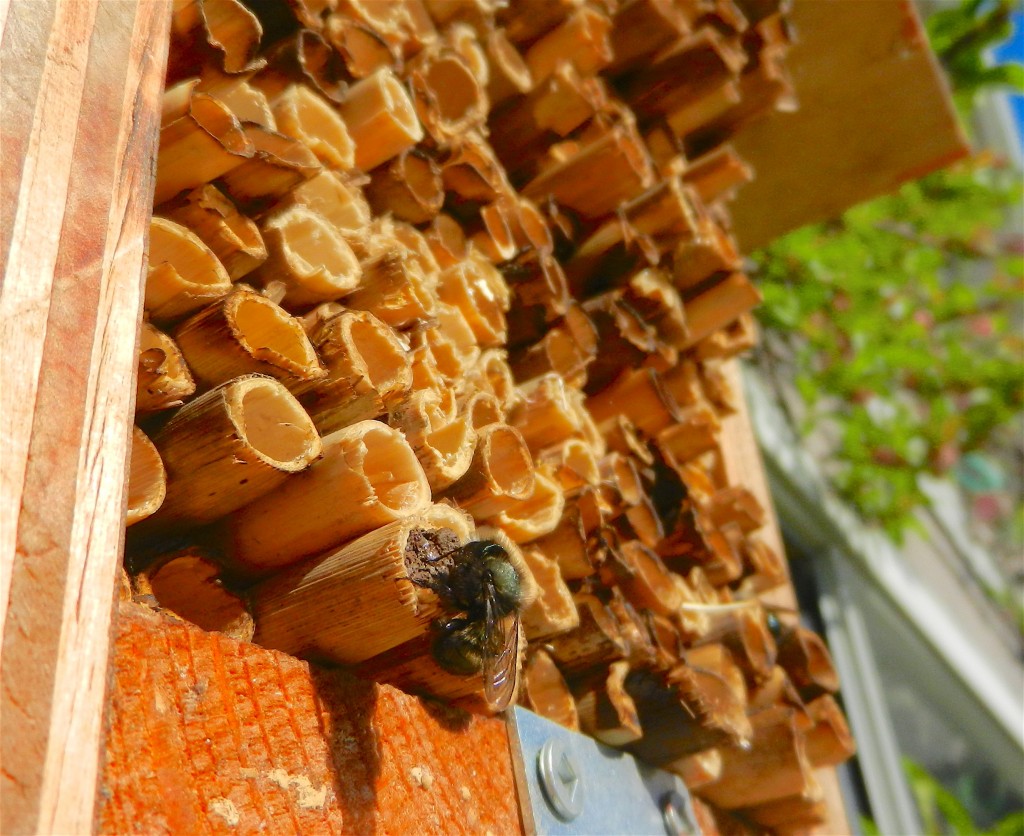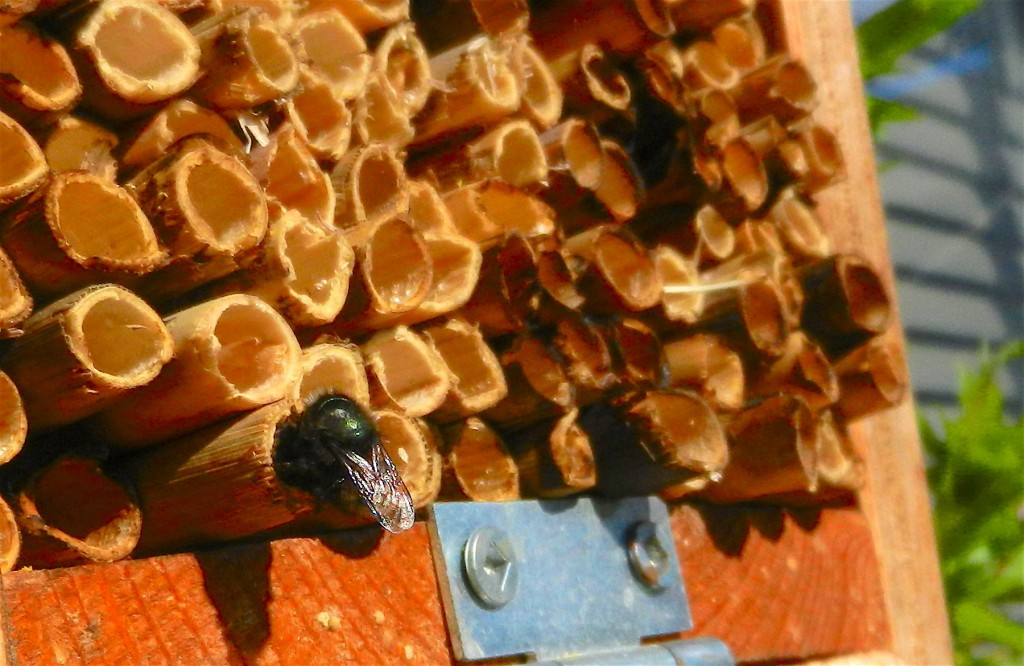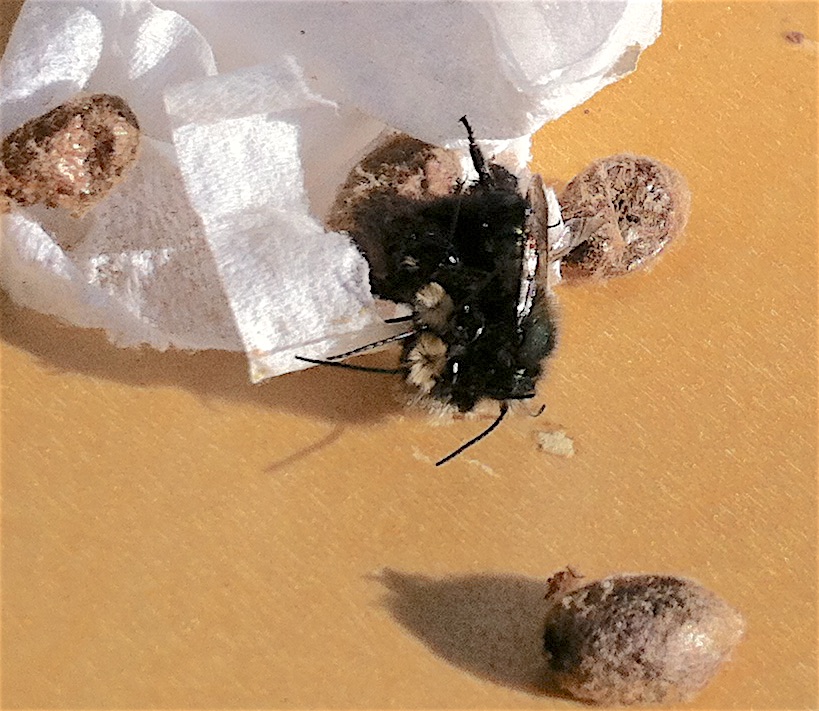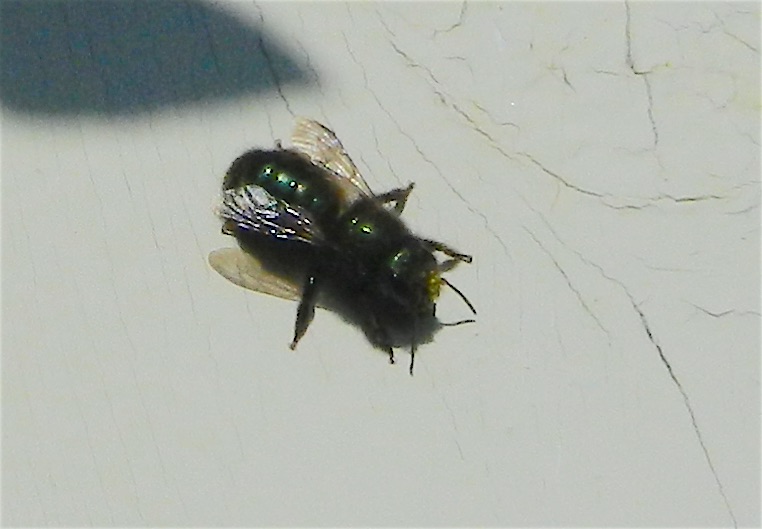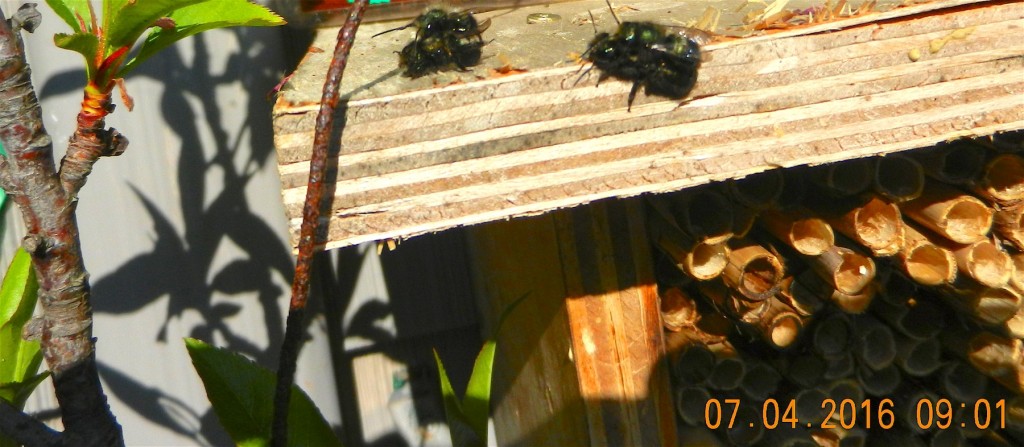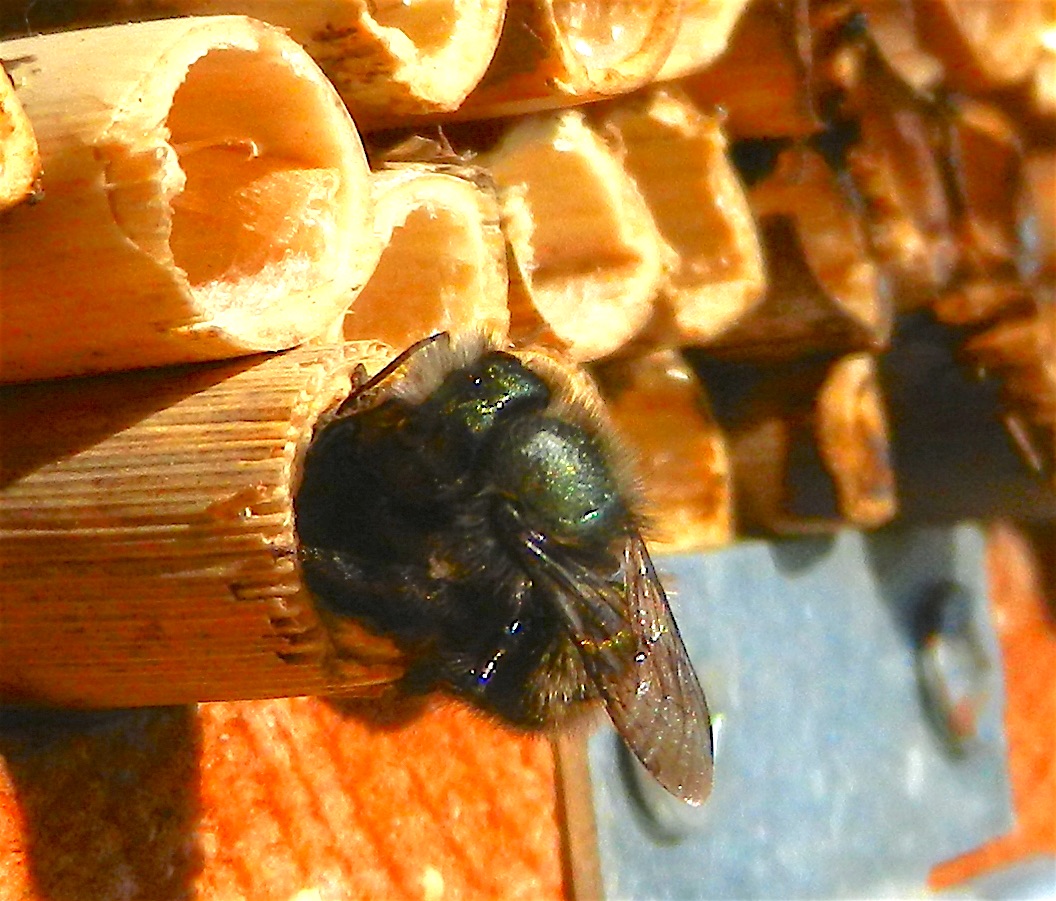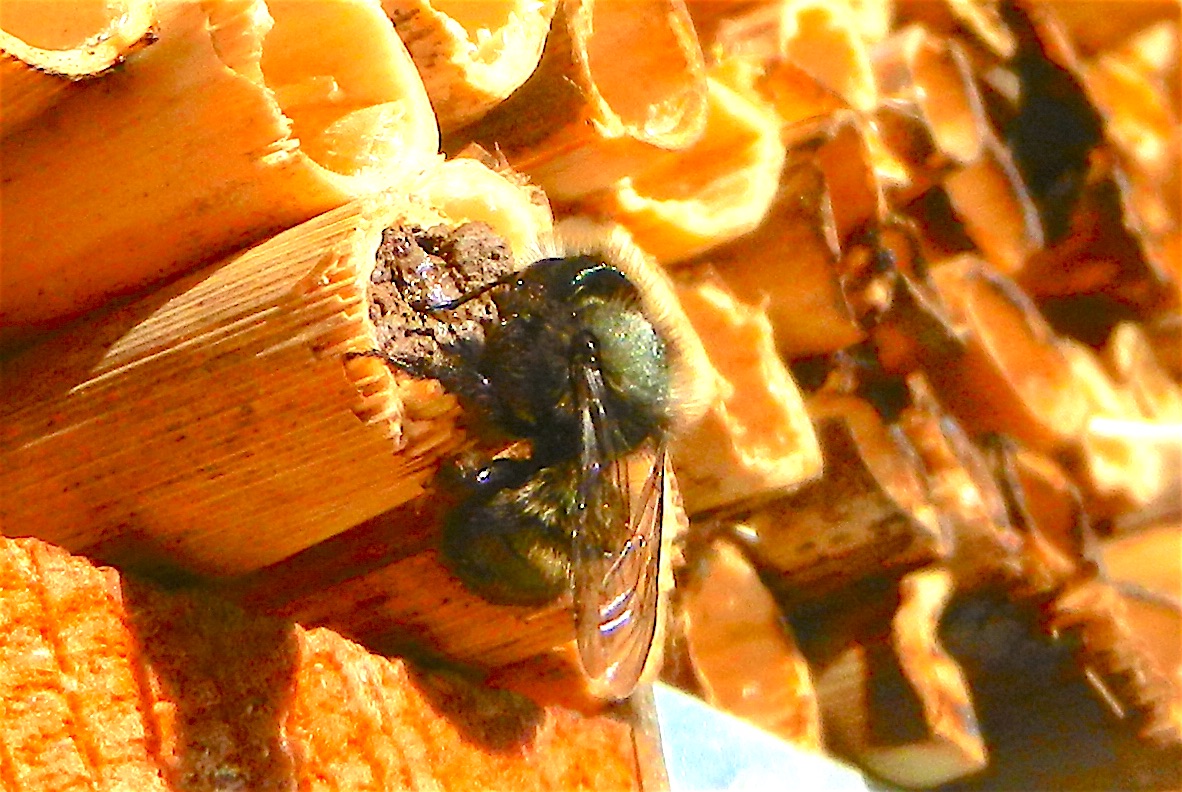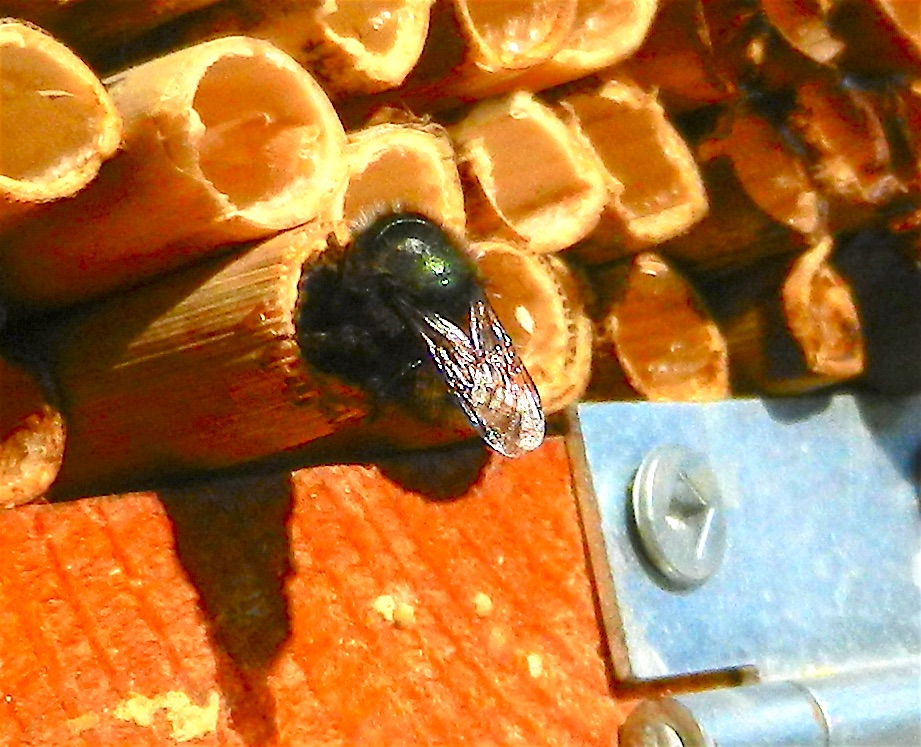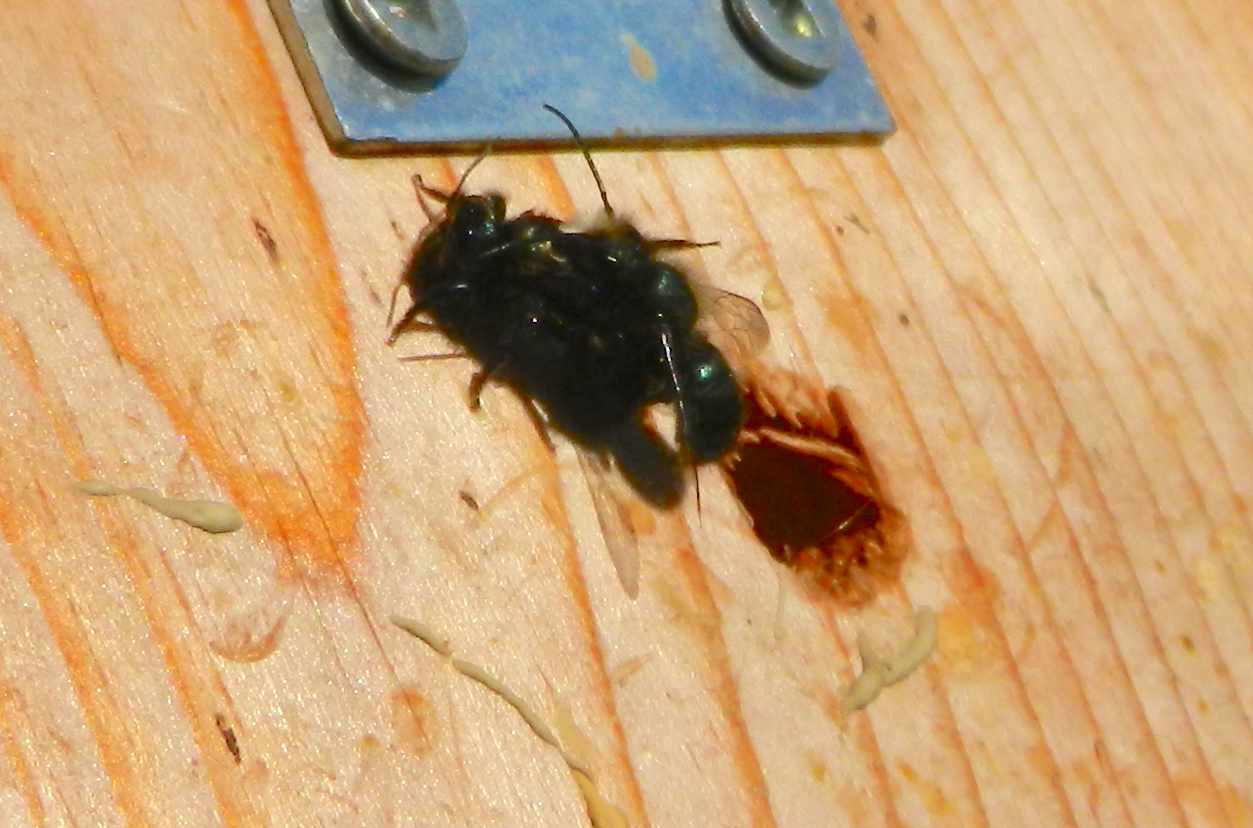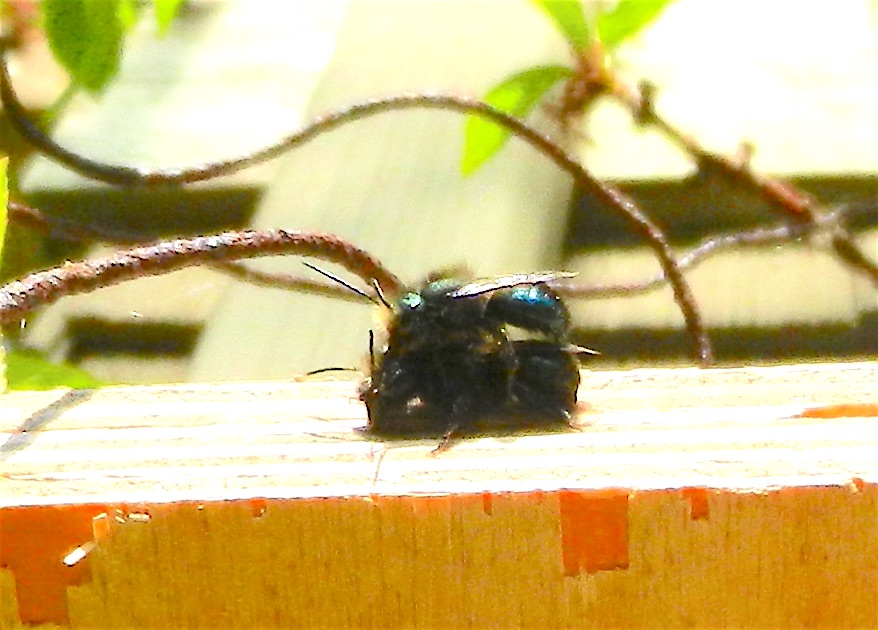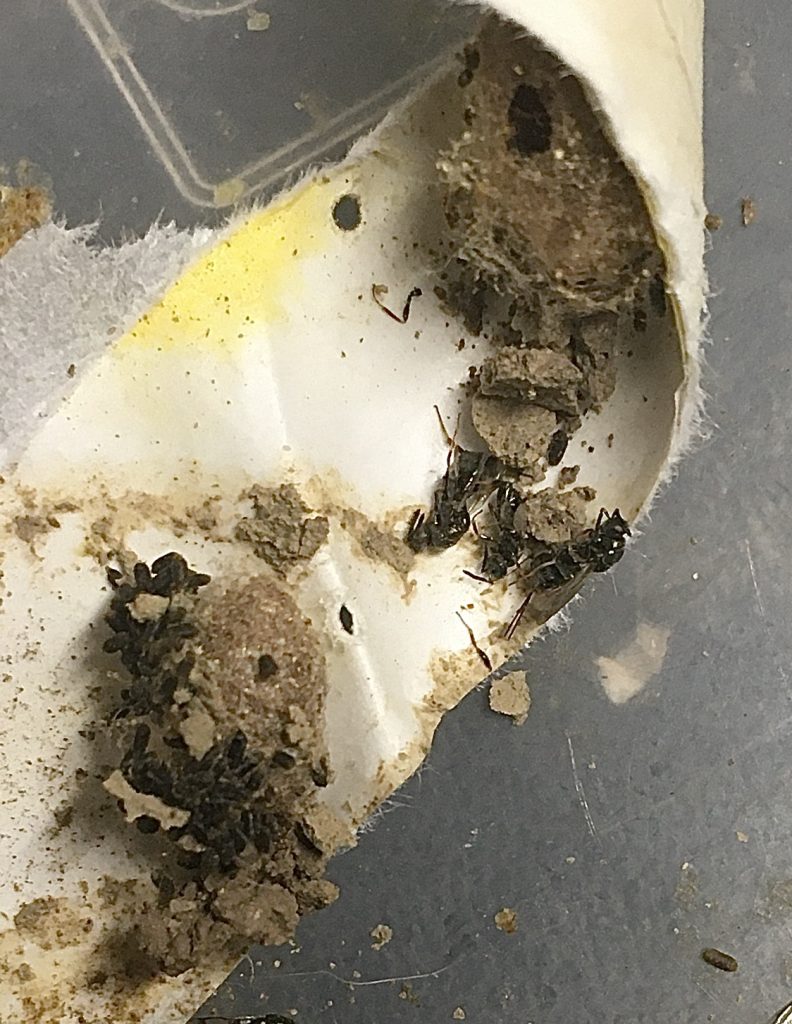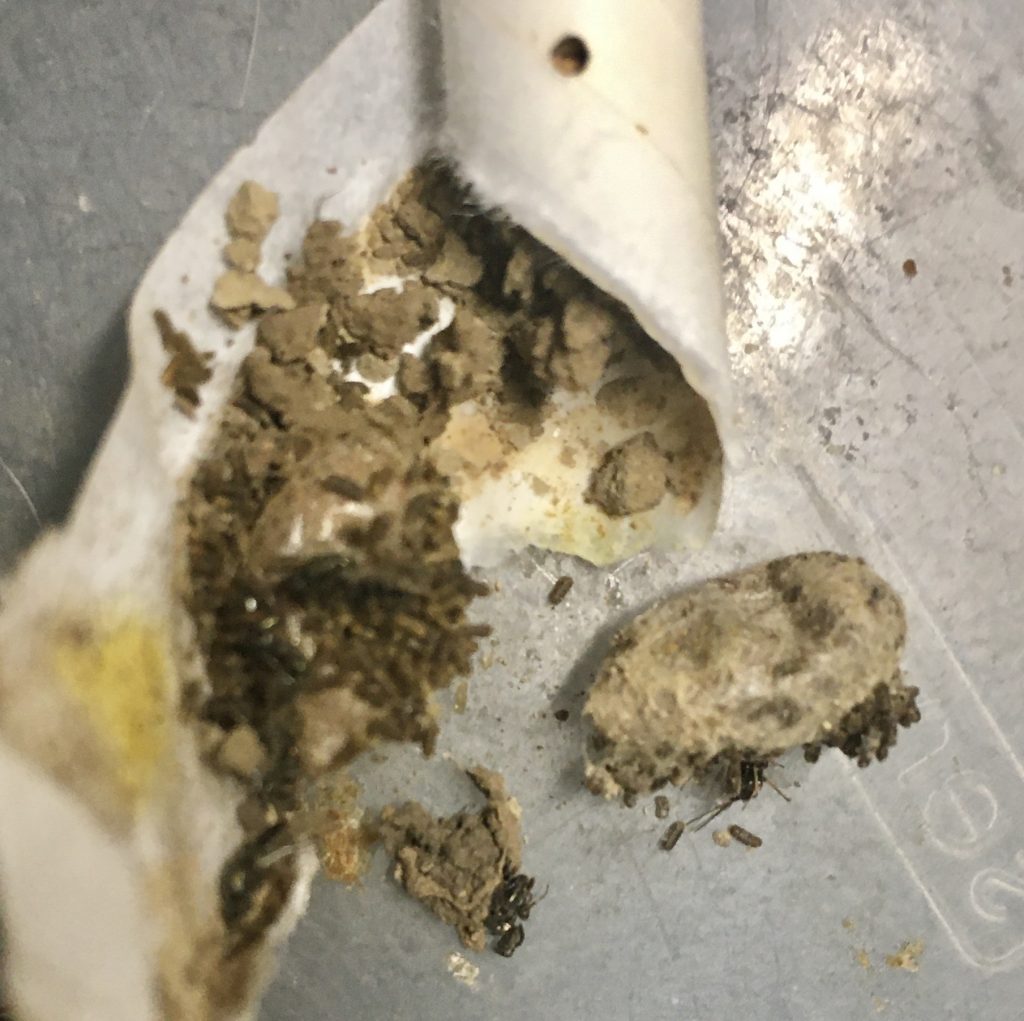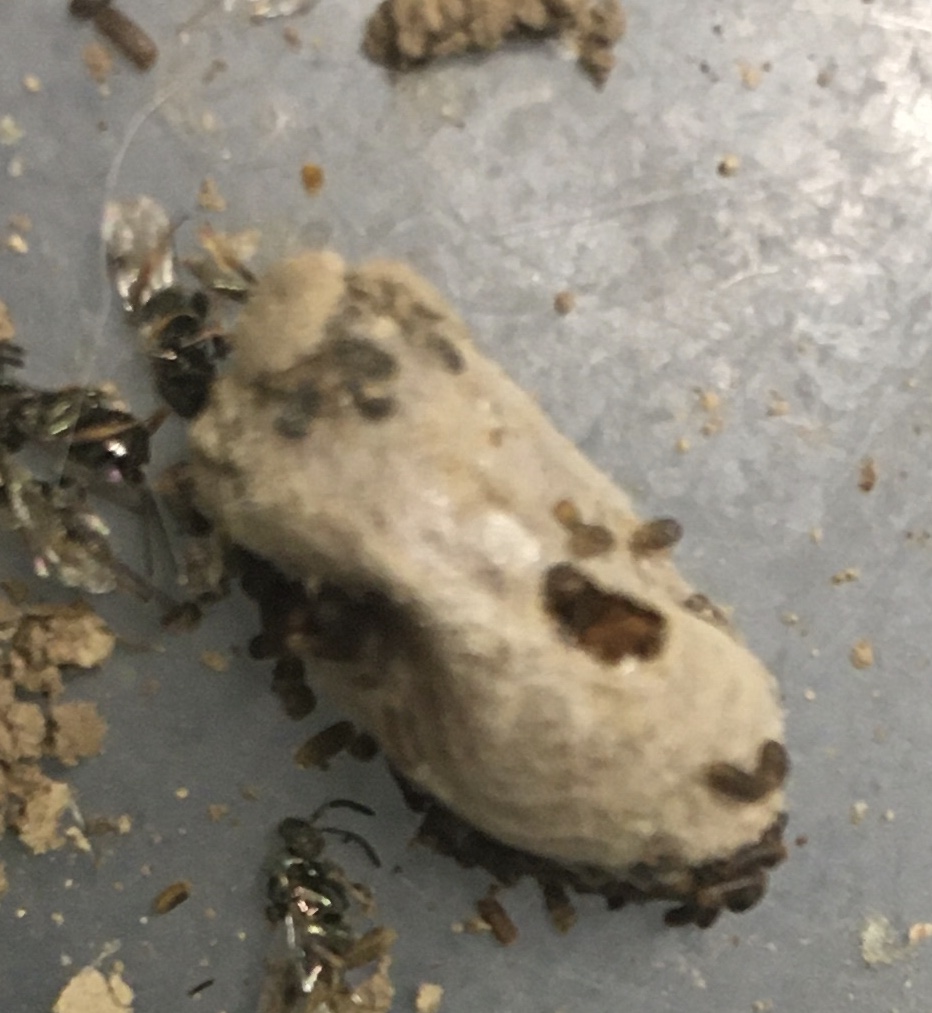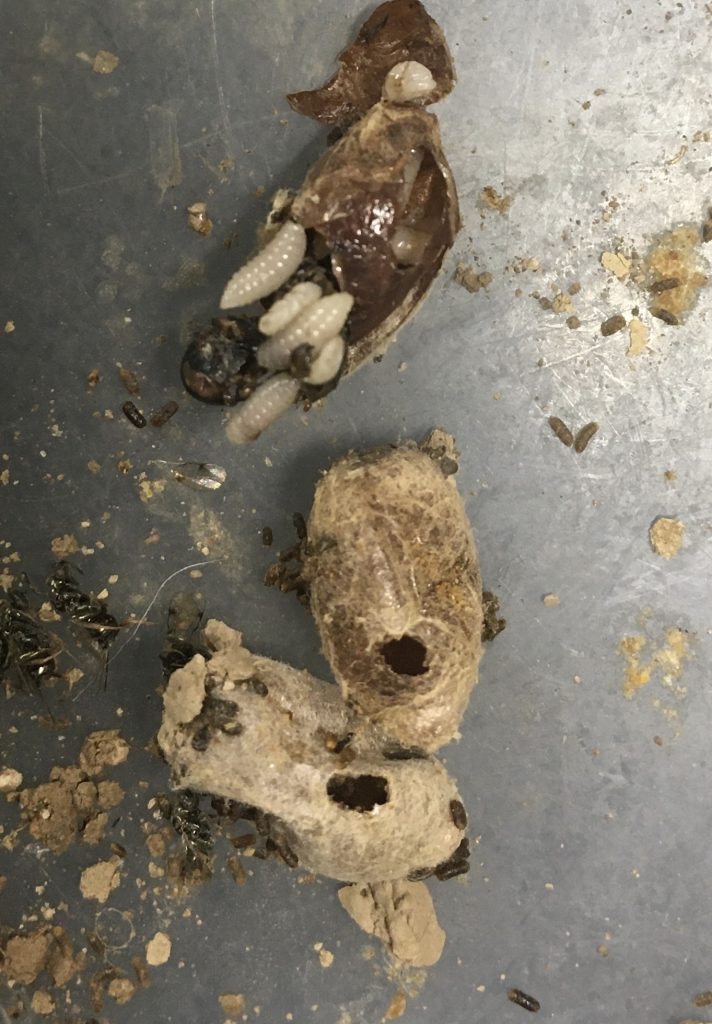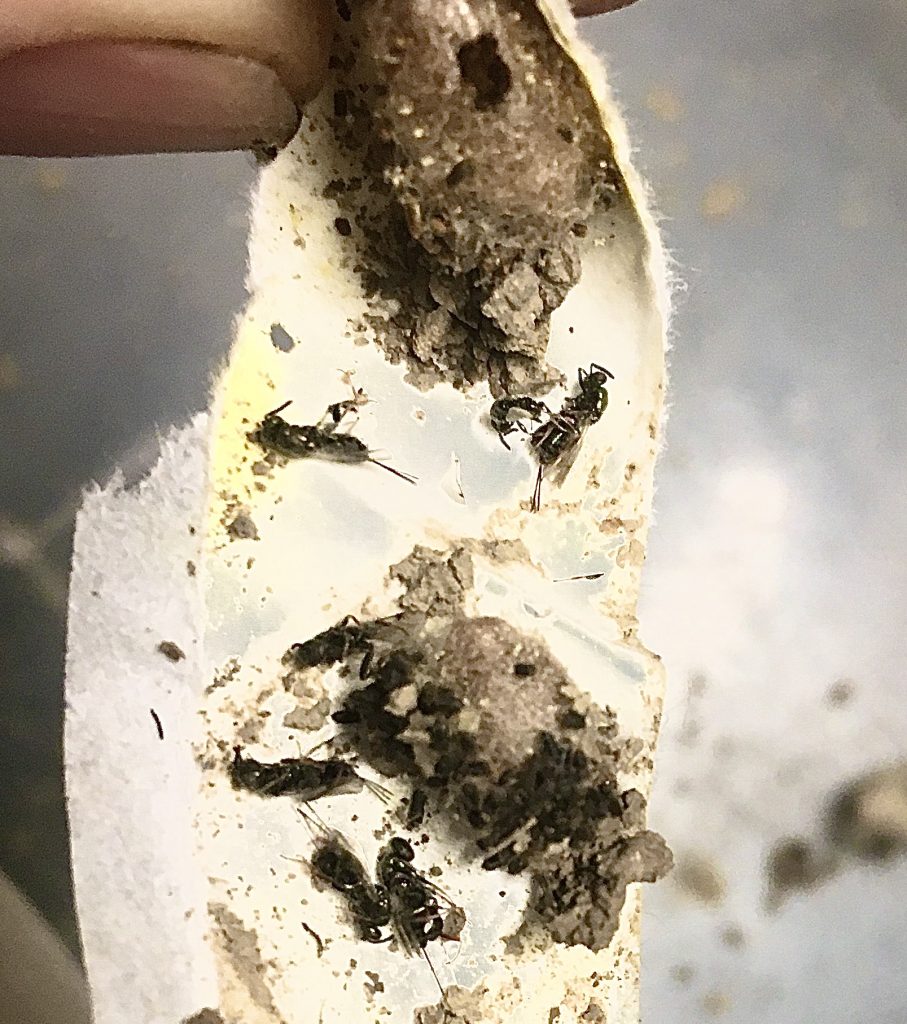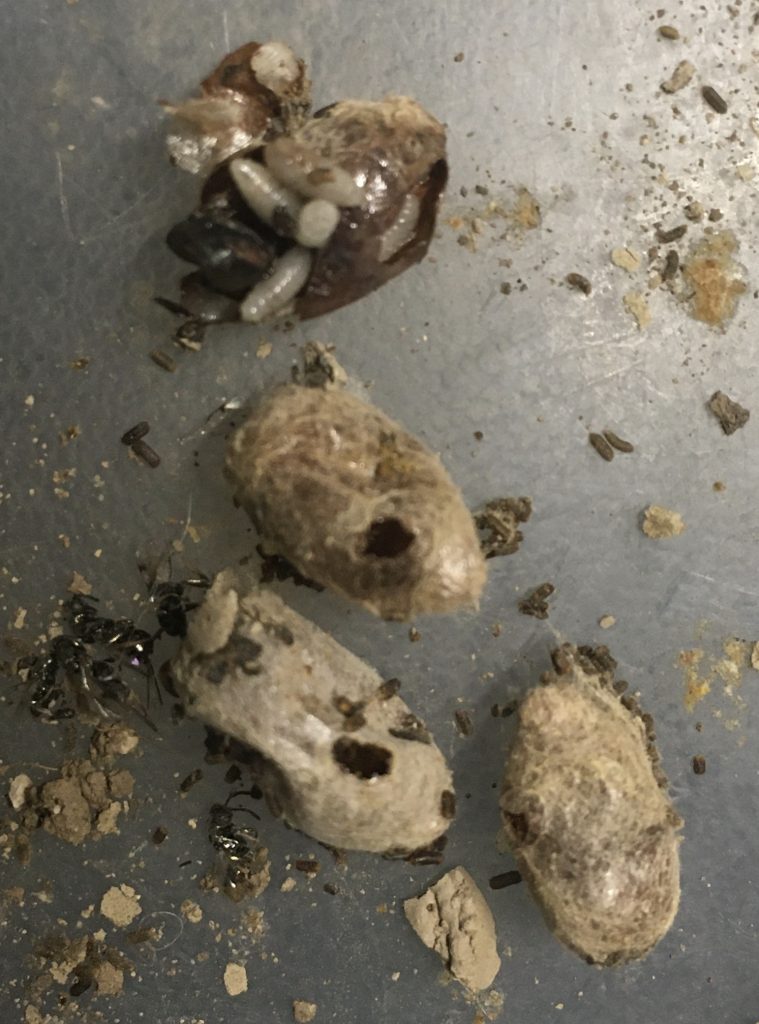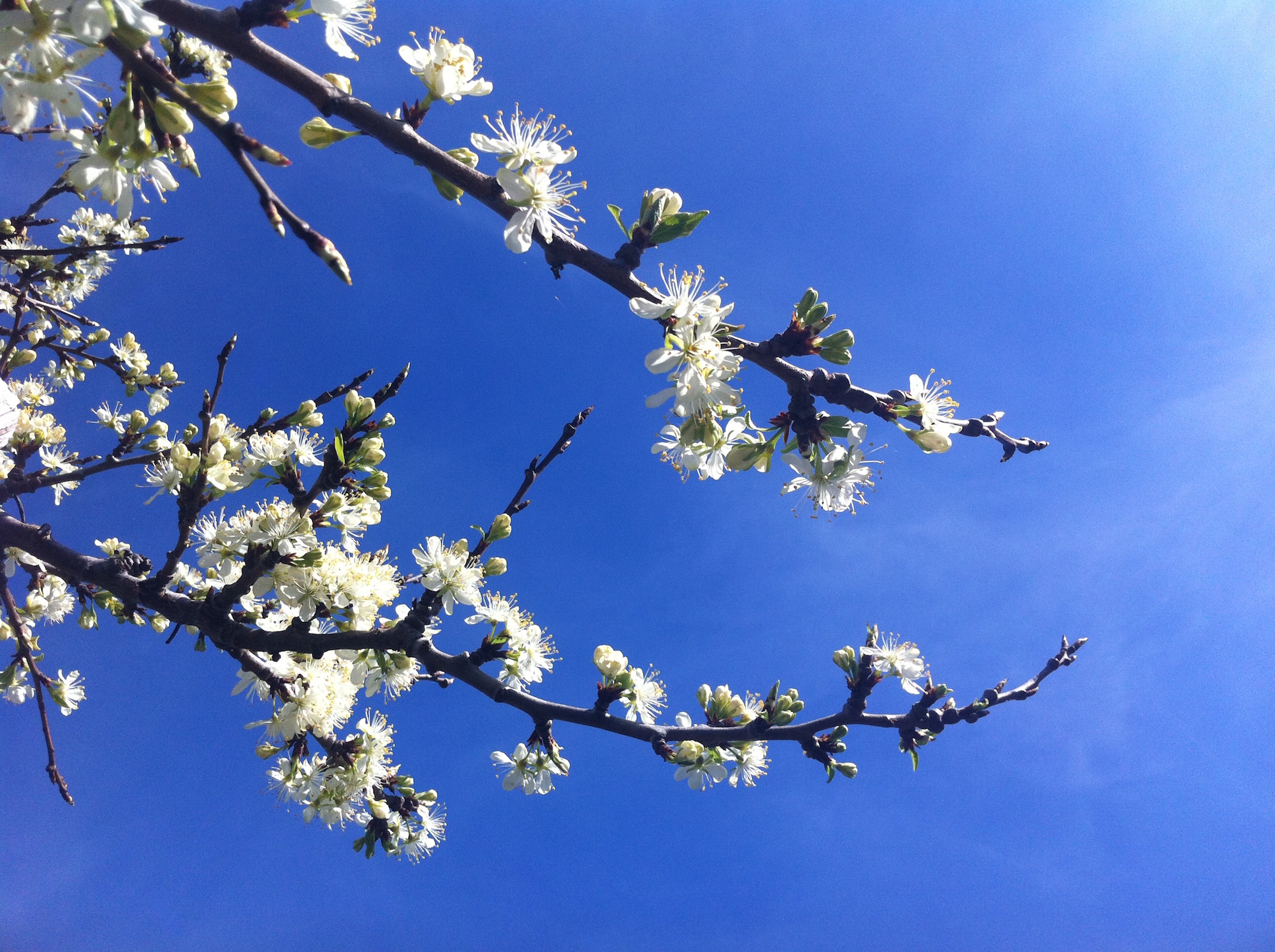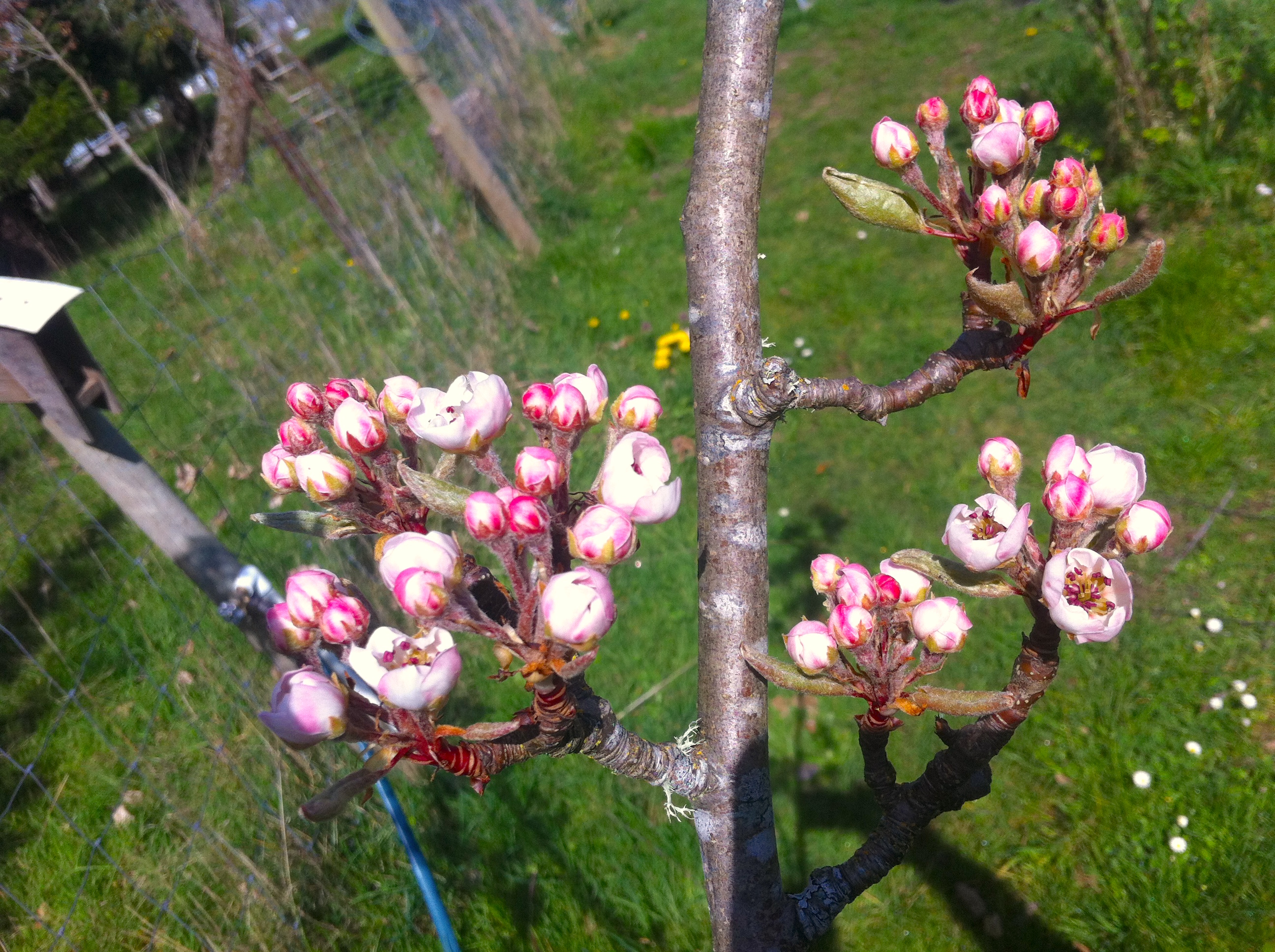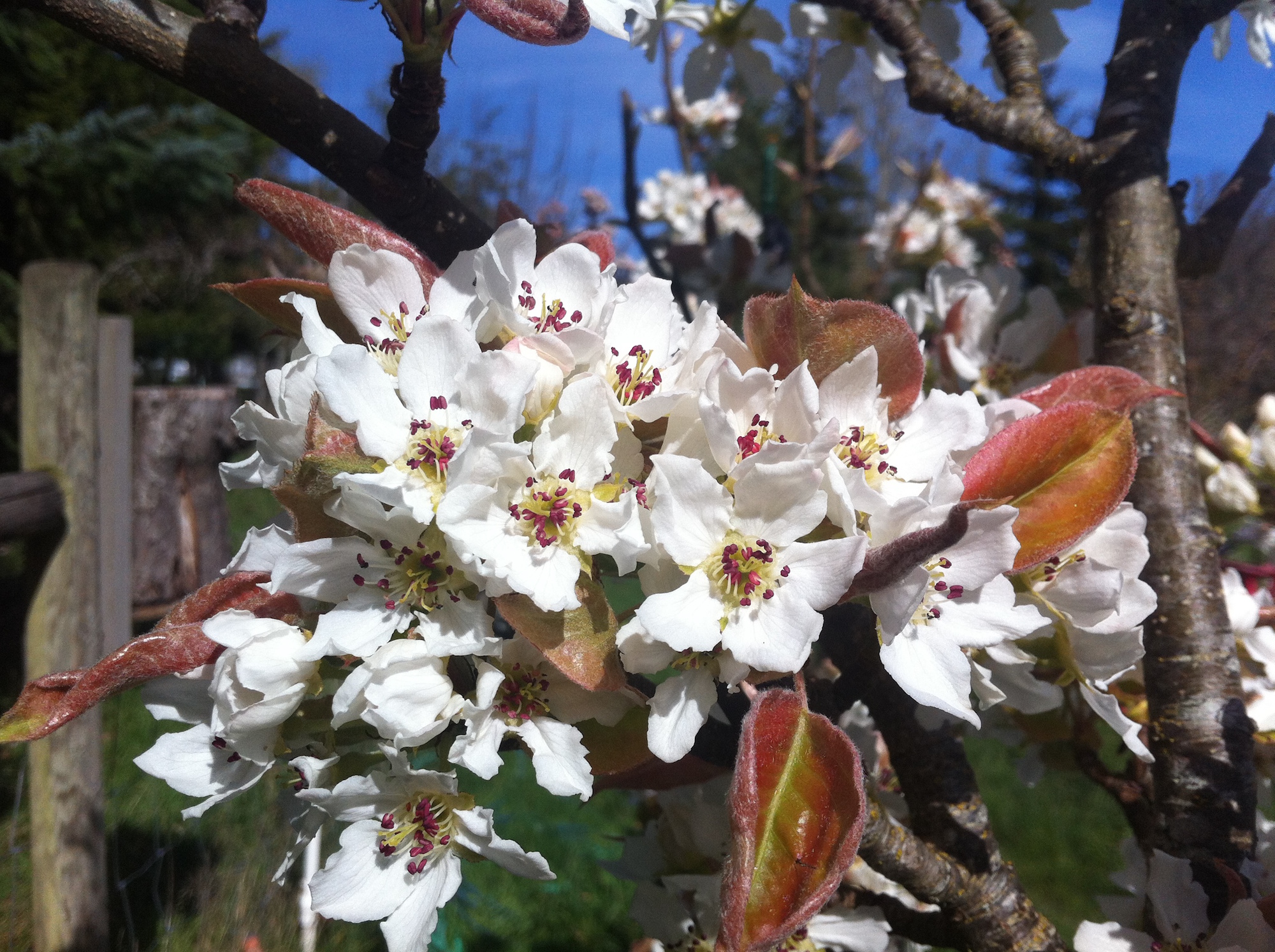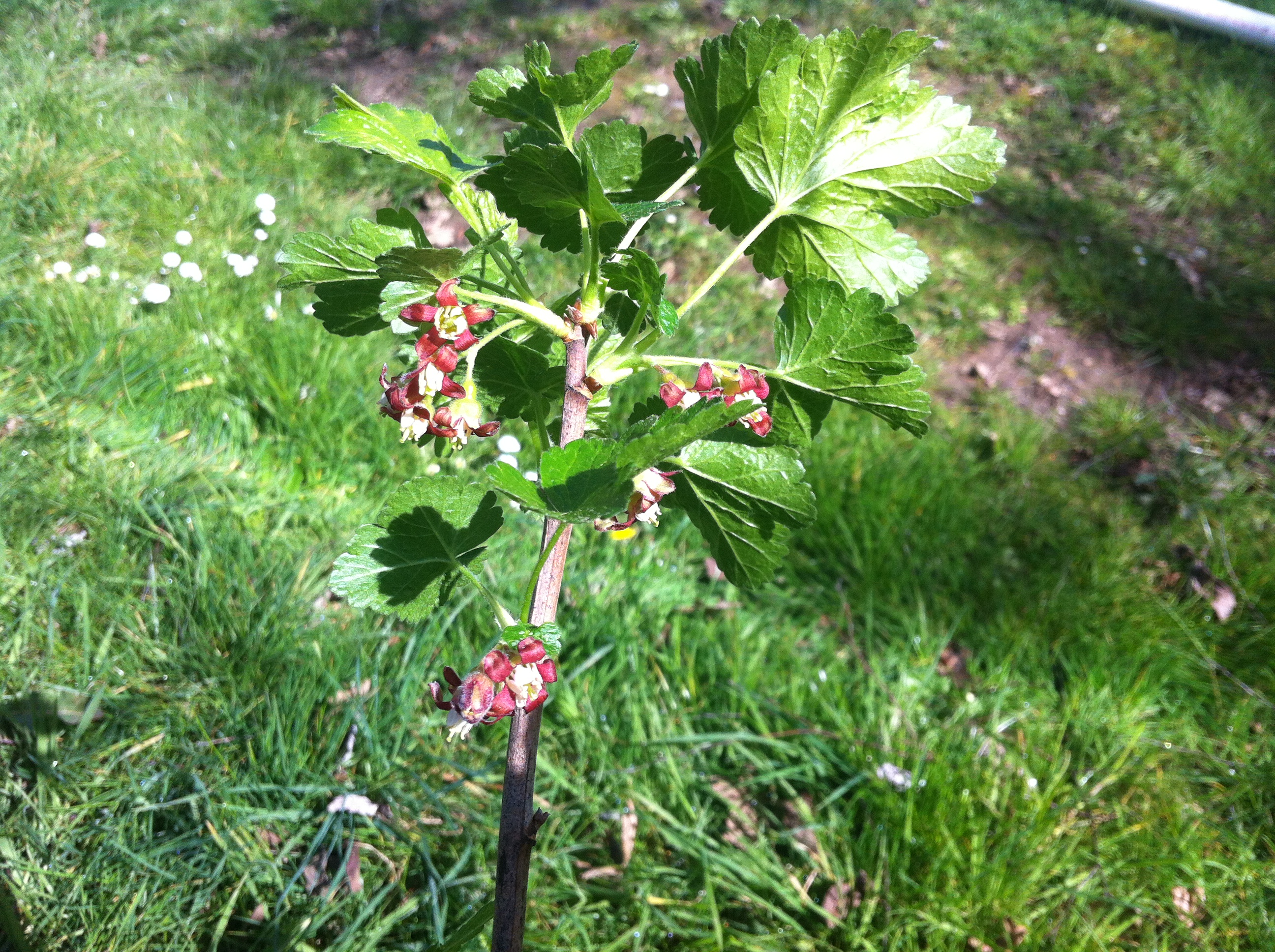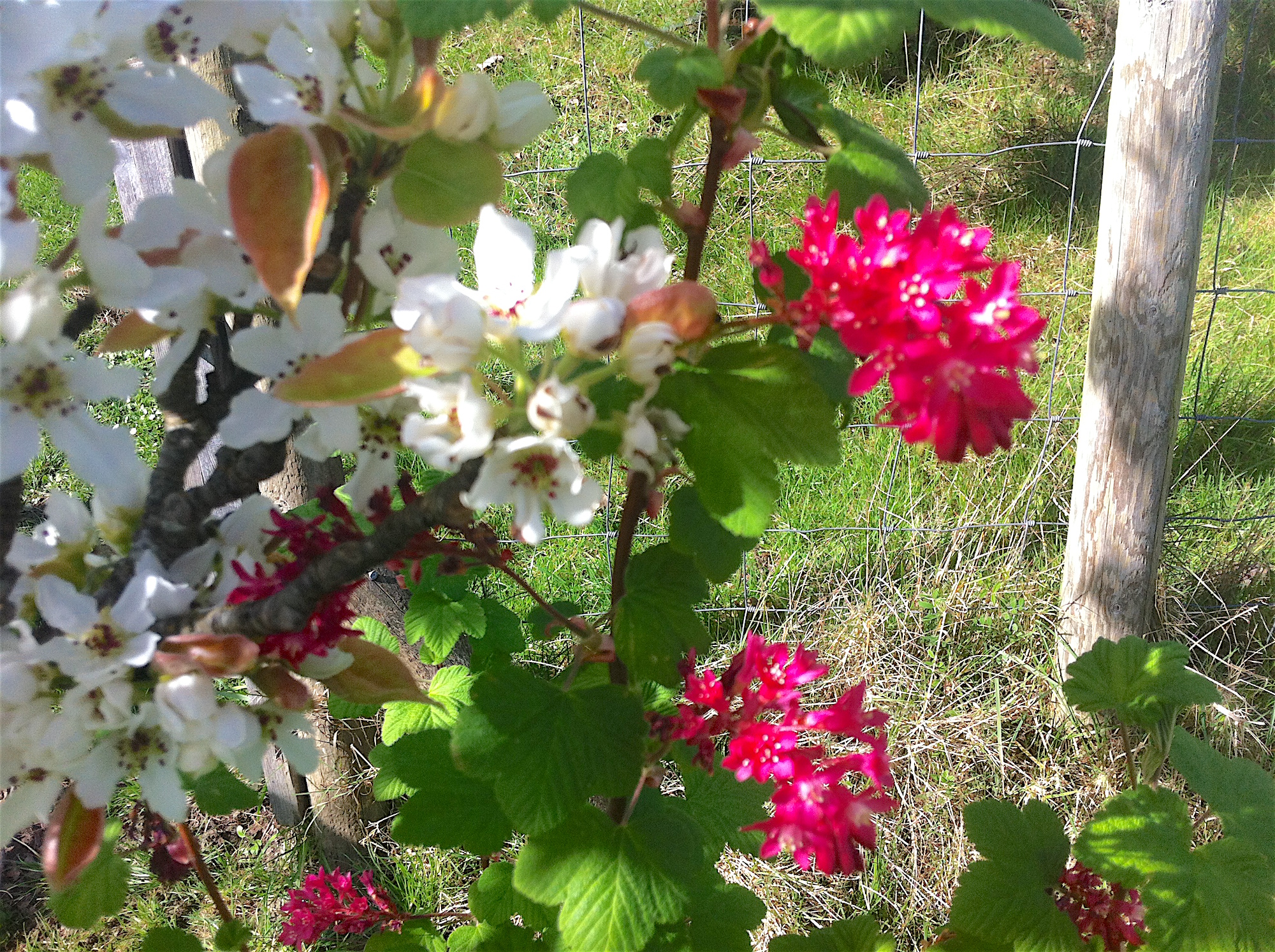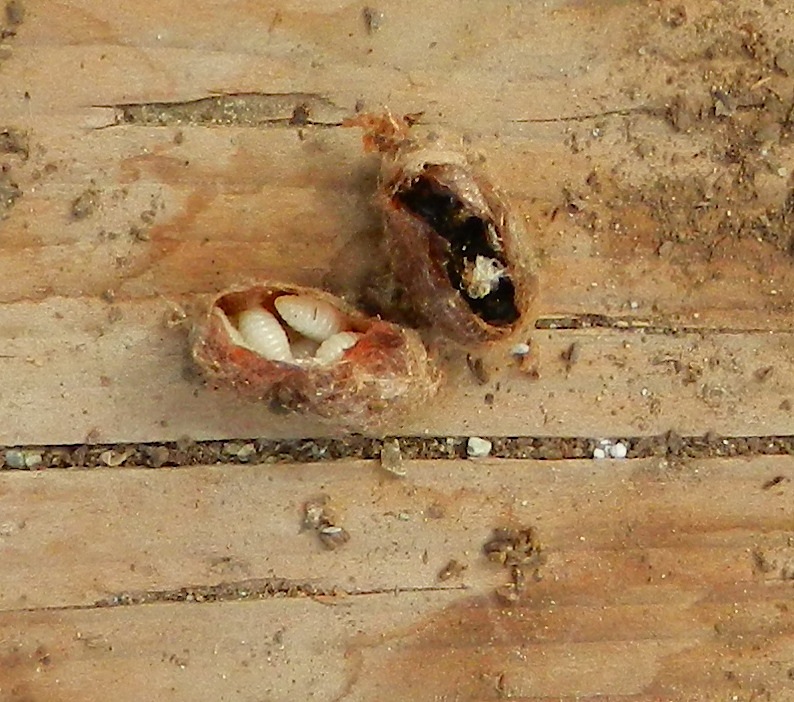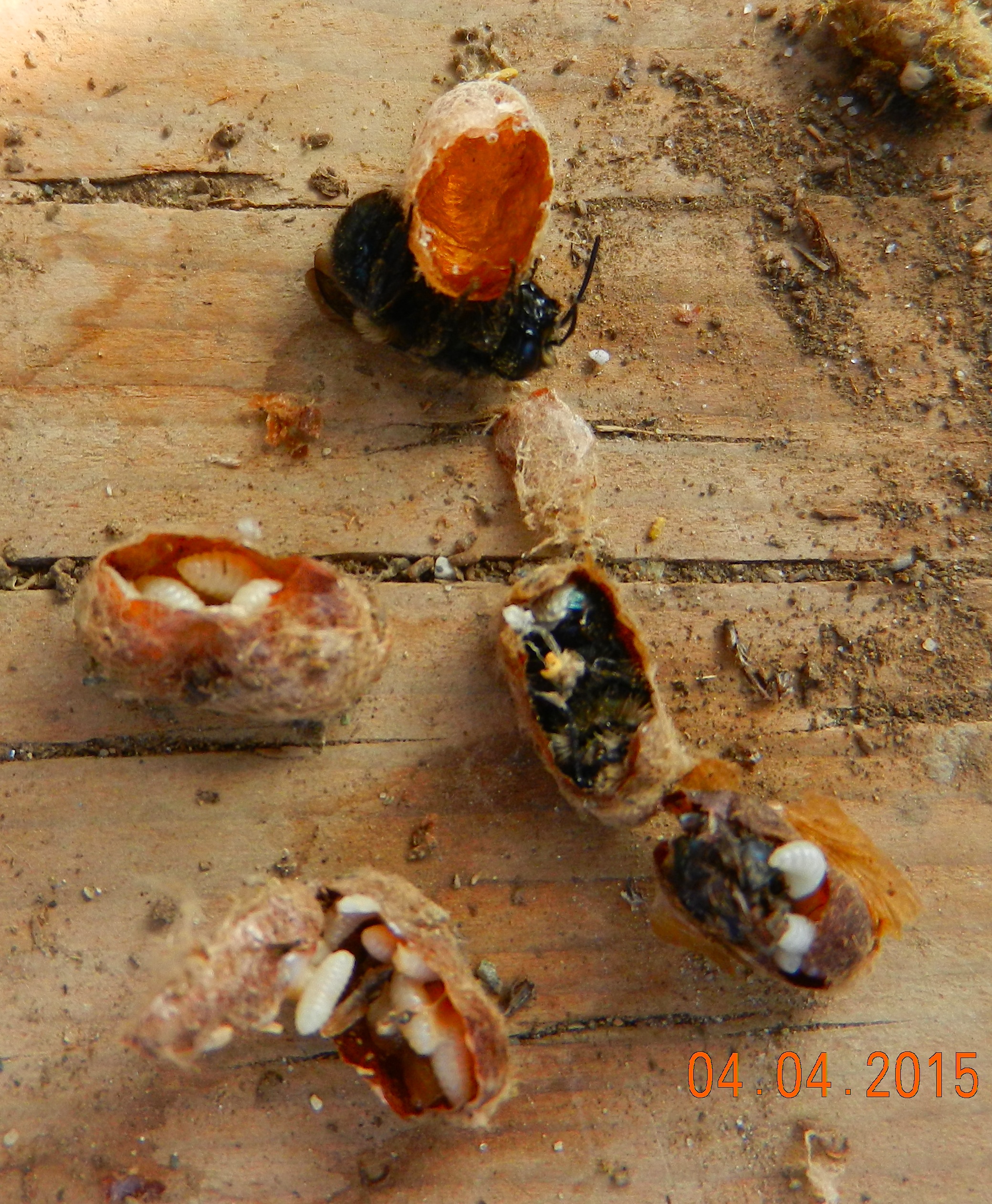I was cleaning out some phragmites tubes which had not been looked after from last year in a friend’s yard and I assumed that since many of the tubes had penetrated mud plugs (usually a sign of parasitic wasps) then they would be empty. To my surprise, in this one tube I had interrupted a current viable set of eggs deposited on the pollen, and since it was a rainy day, the female was still in the end of the tube. I had not seen the egg at such an early stage before , so i took advantage of the opportunity having ruined this tube, to at least get some photos. I did salvage the few compartments at the end of the tube which hadn’t opened yet, but when a tube is moved this early, there is always a risk of the eggs becoming detached from the food source.
Month: April 2021
Mason Bee Nesting Tubes: a Comparison
With a variety of information out on the internet on the best tubes to use for Mason Bee culture, I thought I would report here on some of the trials I have run last season which compared different tubes and nestboxes.
In 2018 I placed Phragmites tubes alongside of the commercially available plastic hinged boxes.
For the question .. does availability of the number of nesting tubes determine the success rate?
In the same location as the samples above , I also had a larger supply of tubes available with the following result.. I haven’t calculated the % of successful tubes here. Note also the dimensions of the box.. I used maximum length Phragmites tubes for this box.
Mason Bees Pollination for Blueberries, Apples and Cherries
NOTE: I have updated this 2015 post in order to make it appear closer to the other mason bee information
Or rather –What’s Blooming this week? (April 15)
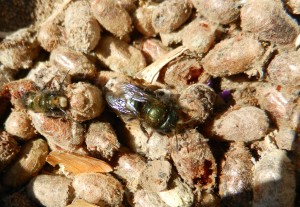
I have been releasing more Mason Bees this week from refrigerator storage so that they are available to fertilize the fruit trees below that are just now coming into bloom.
A late Season here for Mason Bees
It has been so cool in the last month here in Metchosin that my mason bees have almost missed the peach and nectarine blooming time.
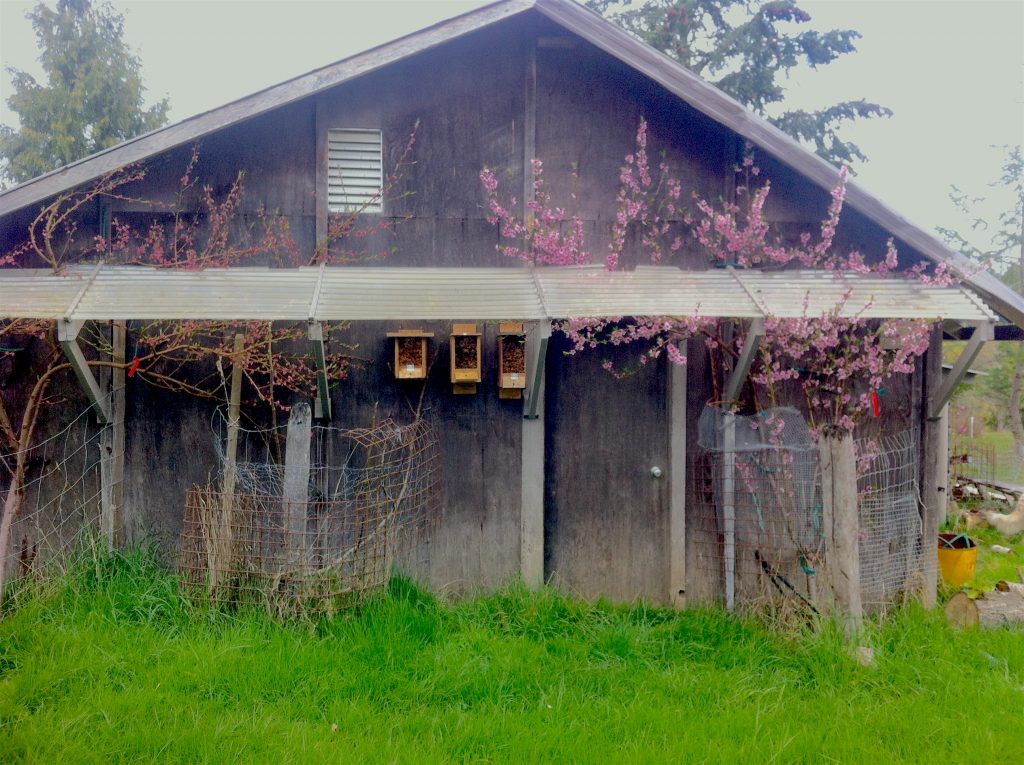
Update–April 15: Today they were the most active i have seen them . I started putting a few cocoons out a week ago, and have warmed up some indoors by just removing their containers from the fridge and then setting the jar out in the daytime when the sun is on them. Anyway a very unusual cold start for the spring.
I have several kinds of houses placed on the southeast corner of our house.
Note, I have re-dated this 2017 post to make it appear with the other mason bee posts.
Mason Bees (Blue Orchard Bees) in action
NOTE: I have updated this 2016 post in order to make it appear closer to the other mason bee information
Some images from this month’s activity of mason bees:
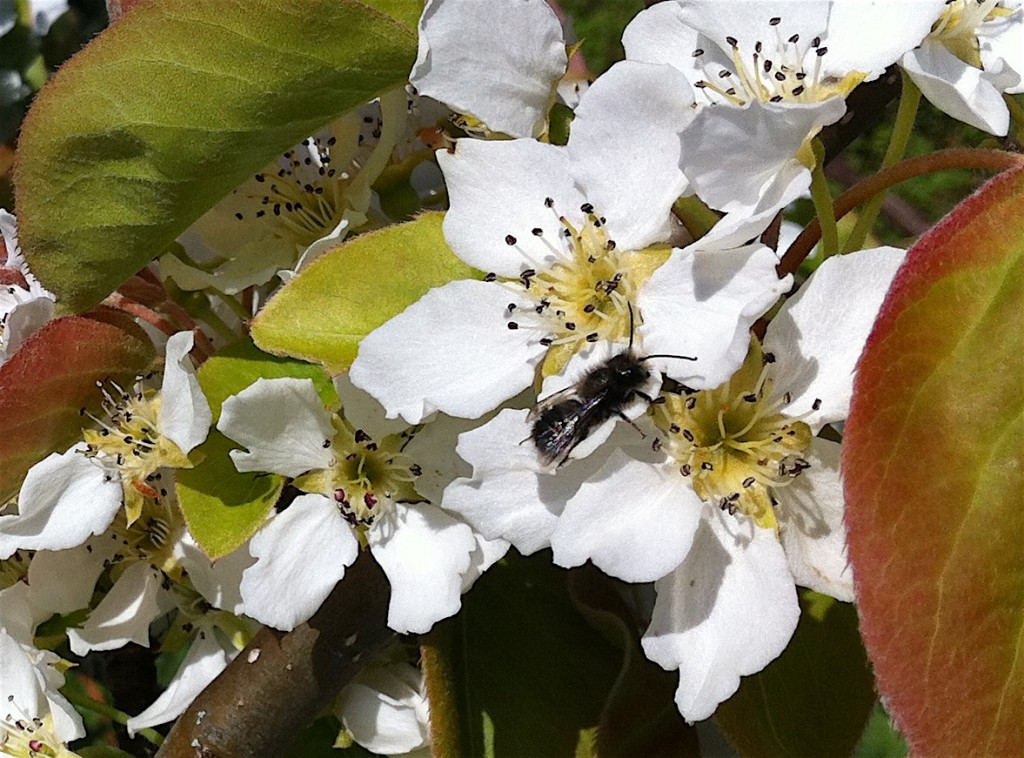
A busy Mason Bee Morning
NOTE: I have updated this 2016 post in order to make it appear closer to the other mason bee information
The warm sun encouraged a lot of activity around the Osmia lignaria boxes today .
Beware of Tubes through which Parasites can Bore
I have experimented for a few years with a kind of plasticized paper tube someone gave to me which were promoted as mason bee home tubes. This year when removing the cocoons from the tubes I noticed small black dots (holes) in two of the tubes which had been mixed in with the phragmites tubes in the nest box . they were suspiciously drilled at very regular intervals, in fact the distance that cocoons are apart.
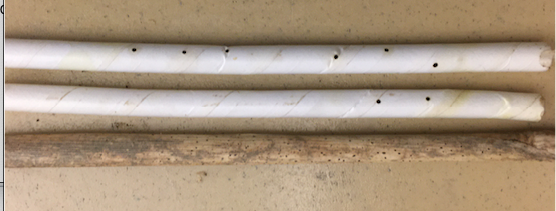
Sure enough, when I opened these tubes, the cocoon which had occupied the spaces beneath the holes did not contain live bees, but instead they were cocoon hulls containing 6-10 live white mono wasp larvae , or hulls with holes and outside of them dead mature mono wasps. Here are a few pictures taken when I was opening the tubes: I had never before seen an example where all cocoons in the same tube had been parasitised like this .
Phragmites reed grass tubes are resistant to the penetration by wasps, so thats one reason they are considered to be superior .
(See https://masonbeesforsale.com/choosing-nesting-materials/) . QUOTE: ” pros: Phragmite Reeds are by far our top choice in nesting materials! They are the best option for several reasons,
1- Size/Shape-Reed tubes naturally vary in size, bees also vary in size and preferences so most bees will find a size they like to nest in. Each tube is cut between nodes so there is a natural back wall. Solitary bees prefer a fully enclosed space to nest in.
2-Protection-They are pest resistant. Mites and parasites aren’t able to burrow through the sides/backs of the tubes.
3-Waterproof– Water will not soften or ruin the tubes. phragmite reeds will naturally wick away moisture. This also decreases the risk of mold, fungus and mildew affecting the bees.
4-Sustainable-Each reed is hand cut to the ideal length (approx. 6inches) from natural sources. Cutting reeds is more environmentally friendly than the burning that usually takes place to get rid of the reeds.
5-Easy Sorting– At the end of the season the reed tubes can easily be split in half. Bees can easily be sorted without damaging the cacoons.
cons:
1- Disposable-Reeds need to be replaced after each season, this requires purchasing new tubes. Luckily they are affordable.
2- Predators– Squirrels and Raccoons are sometimes able to get the tubes out of the bee house if not packed tightly enough. Placing some chicken wire over the front of the bee house and packing the reed tubes tightly in the house will prevent predators from getting your bees. “
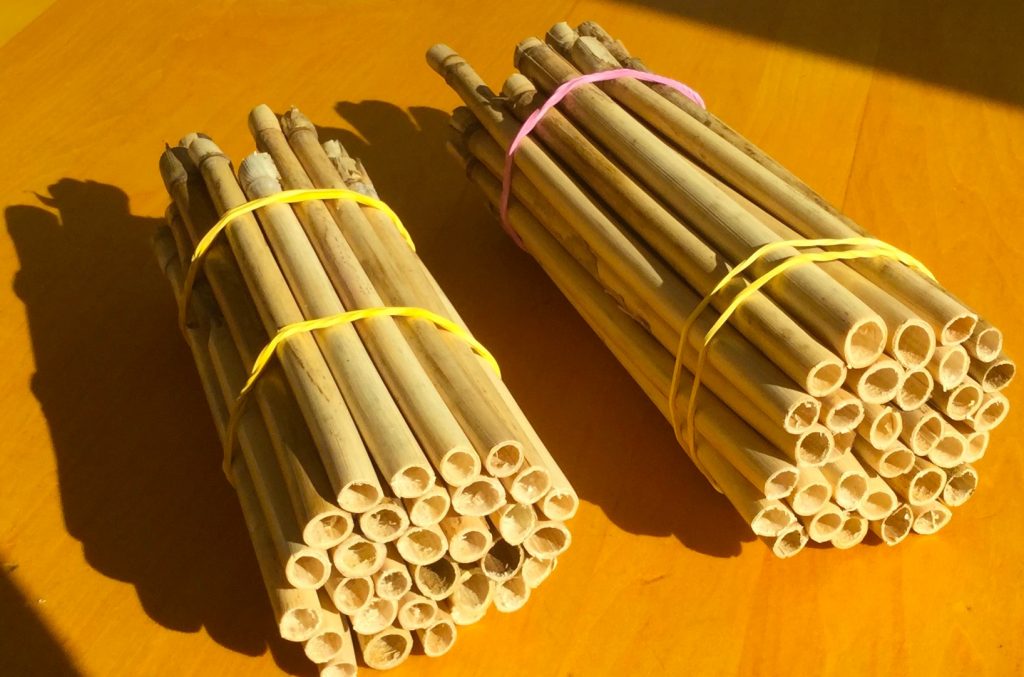
here are some links for various species of parasitic wasp
chalcid wasp predator video: https://www.youtube.com/watch?v=hL6uWSc6rK0
Put Out Your Mason Bees when Pollinators are Needed
NOTE: I have updated this 2016 post in order to make it appear closer to the other mason bee information
The time to put out your mason bees which have been overwintered in your refrigerator is when you need them to do their work. I release mine in batches. The first batch was several weeks ago when the peaches and nectarines were in bloom. This week, the pears, plums and cherries are in bloom so I just put out another batch of cocoons near my bee homes. I will save the last batch for my apple trees which bloom later.
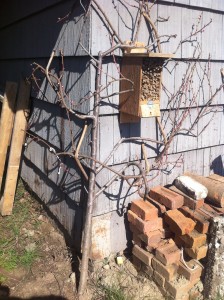 I had to transplant this peach tree this year to the corner of the vegetable preparation building so I found another good spot to place a bee home.
I had to transplant this peach tree this year to the corner of the vegetable preparation building so I found another good spot to place a bee home.
Mason bees always need good mud
NOTE: I have updated this 2016 post in order to make it appear closer to the other mason bee information.
Don’t forget to make sure that your mason bees can find a good source of mud while they are laying their eggs in your tubes. I discovered a year ago that if you provide a reliable source within a few metres of the bee houses, they will use less energy to gather mud and will therefore be more efficient.
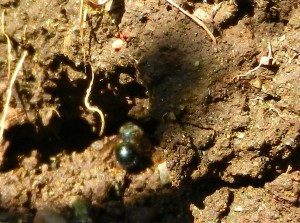
See this post I did. Another observation has led me to believe that they prefer to collect mud in horizontal holes in the side of a trench. This trench is kept wet throughout the nest-building period, and I dig holes into the walls of the trench. It is probably an adaptation to prevent predation, as they would be easy targets on an open patch of wet soil. They also prefer “clayish ” mud, as any good mason knows that their mud needs to be sticky… Sandy doesn’t do it!
This year I gathered some freshly exposed clay and added it to my mud trench.
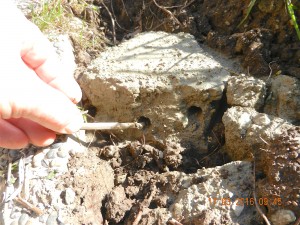
Monodontomerus wasps: Parasites of Mason Bees
ARCHIVAL: This post has been re-dated from 2015 in order to position it closer in the blog to Mason Bee Information
I find that if I remove a set of Mason Bees from the refrigerator and put them out by the colonies to emerge from their cocoons as the weather warms up, if they are not hatched within a week, and yet look like viable cocoons, you can suspect that they may have Monodontomerus wasp parasites,
I opened several cocoons today and the results are shown below. In many of the cocoons the bee was still alive, but must be weakened so that they can’t chew their way out. If I got them soon enough before they were being thoroughly eaten, often with small white eggs attached to the outside which the bee brushes off easily, they can fly away after a few minutes. In the handful of about 100 cocoons that I looked through today, less than 5 % seem to be affected like this.
This external website has a good video on how Monodontomerus wasps attack mason bees.
This external website provides a method of “candling” to check for Monodontomerus parasitic wasp larvae.
Other links on the websites to parasites
